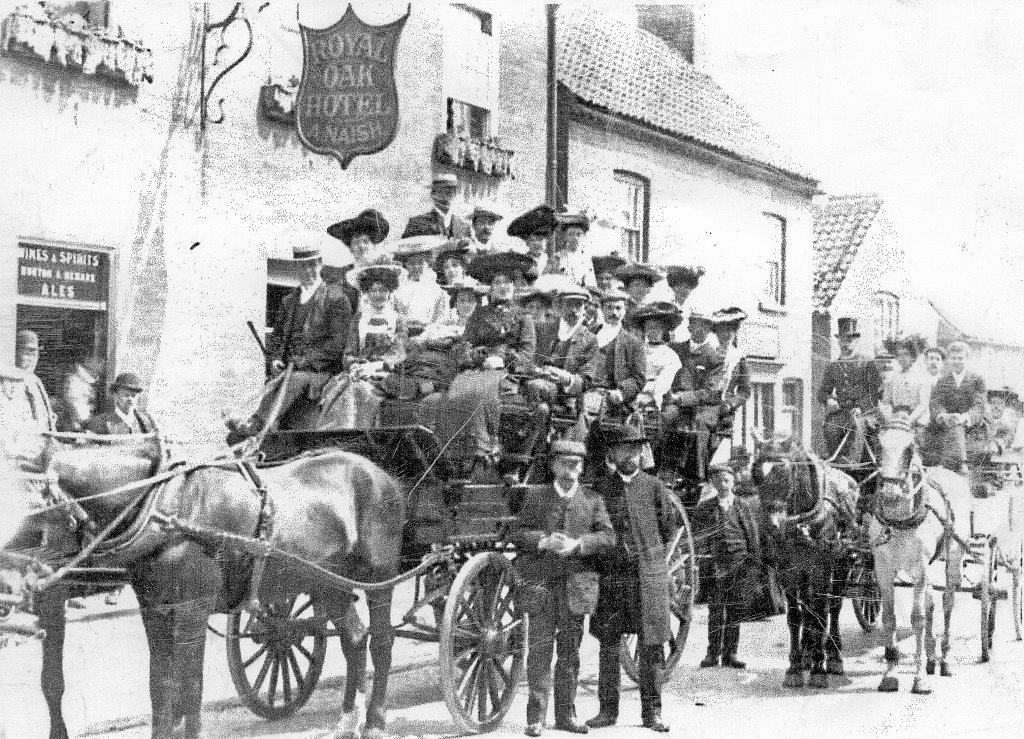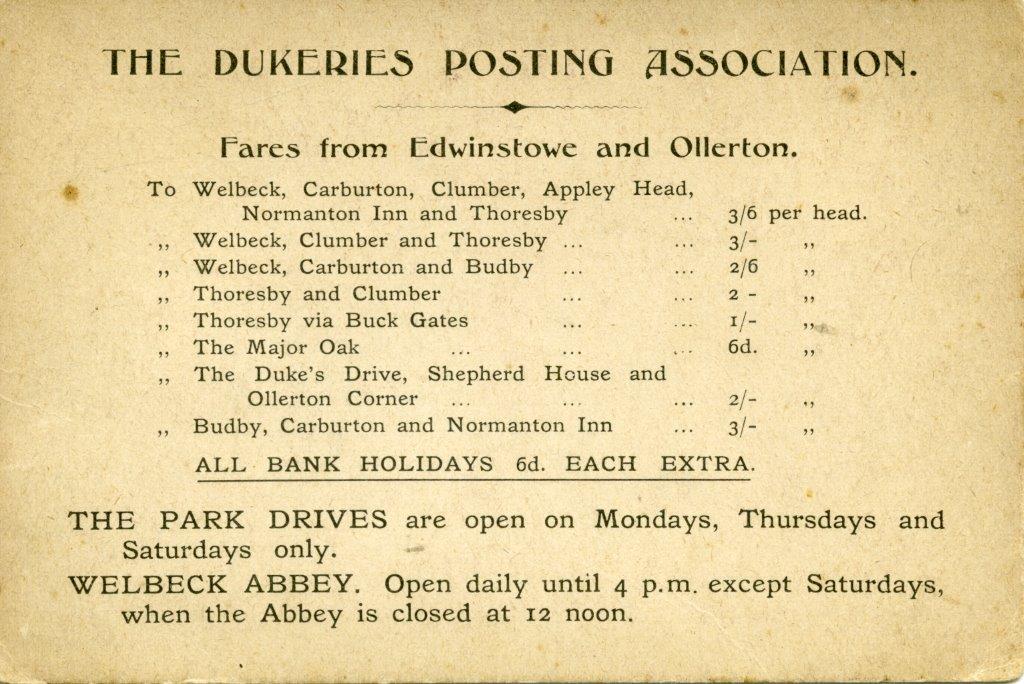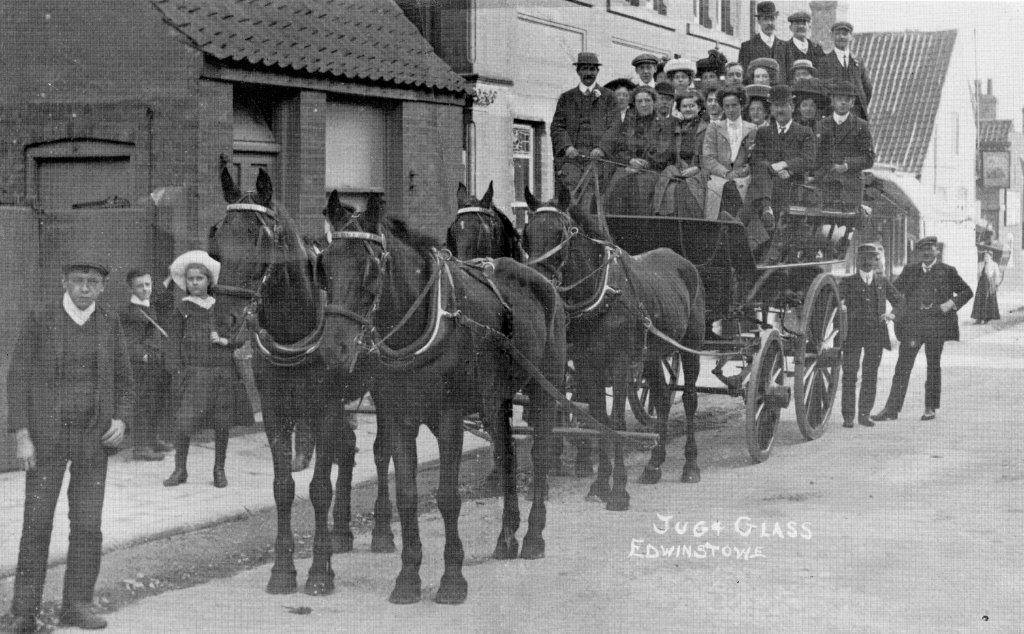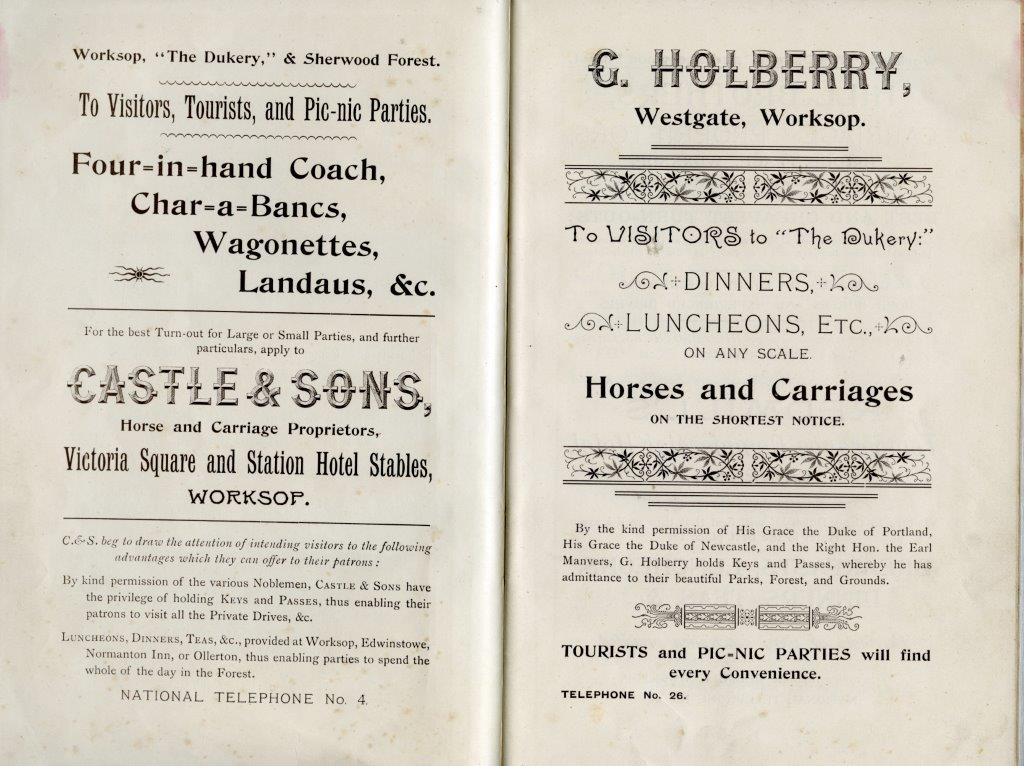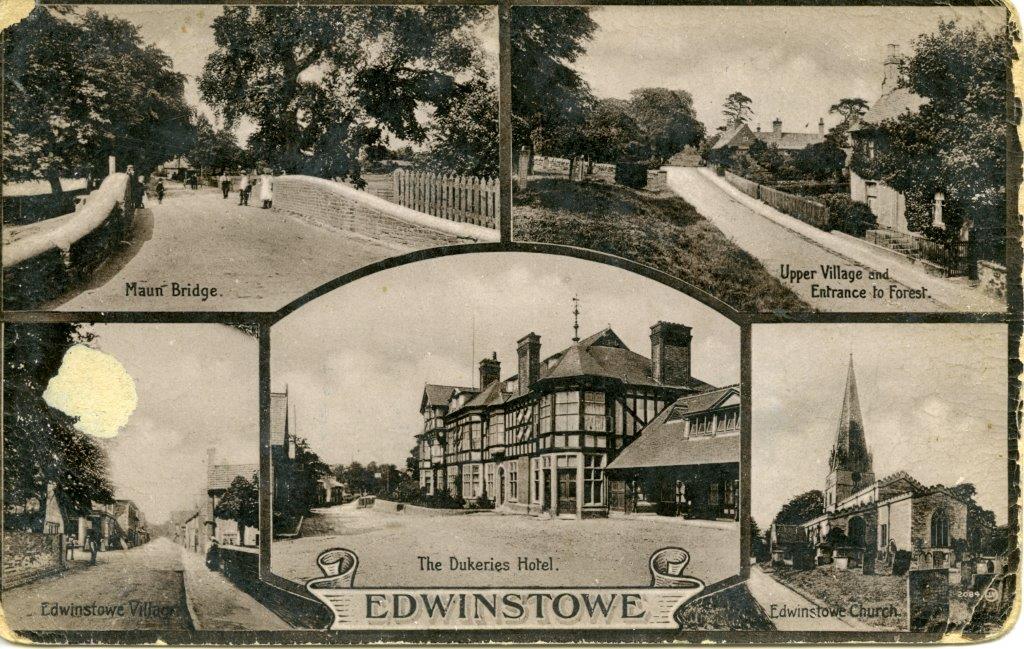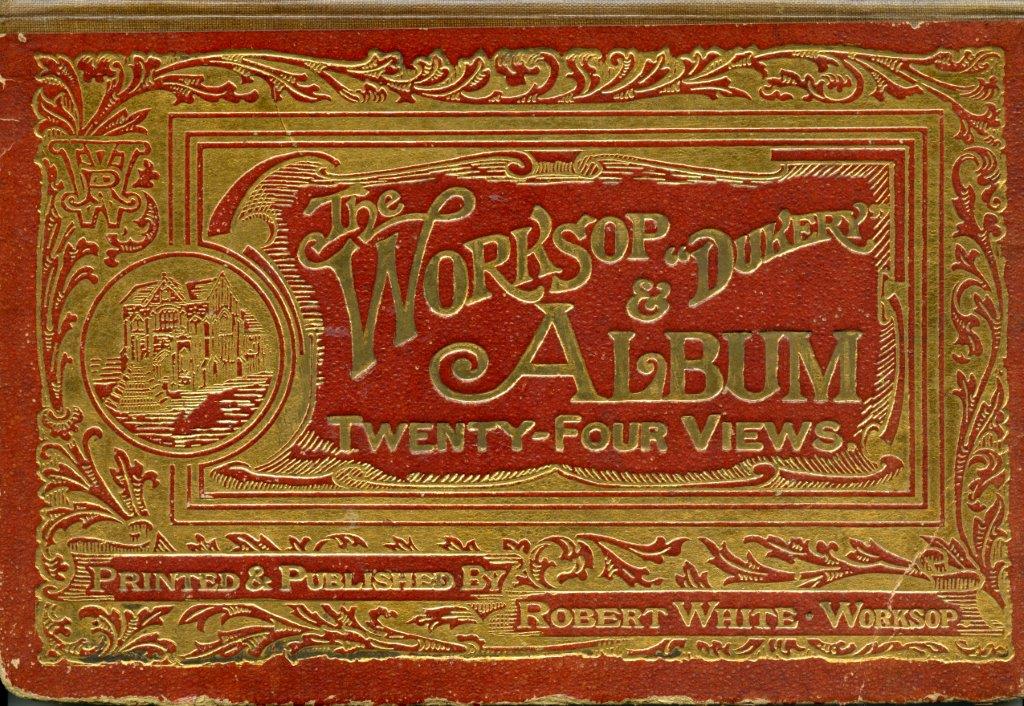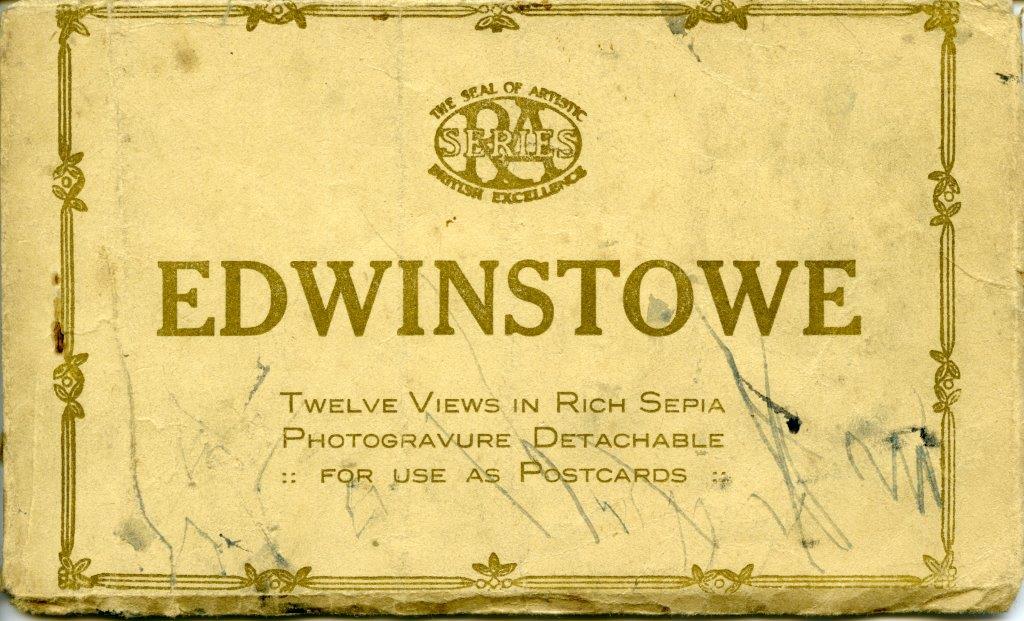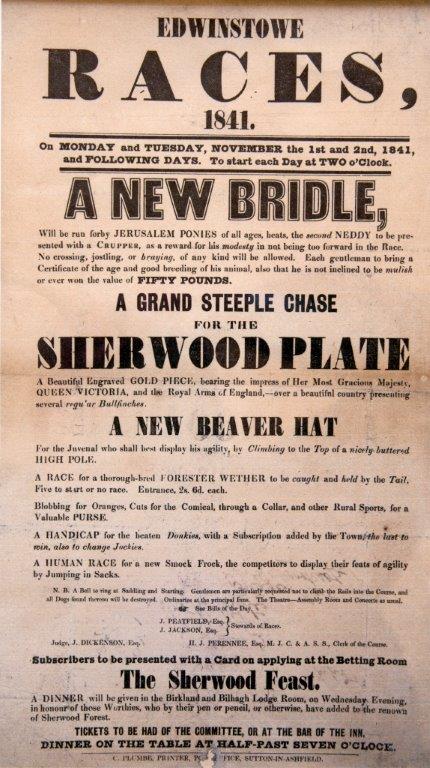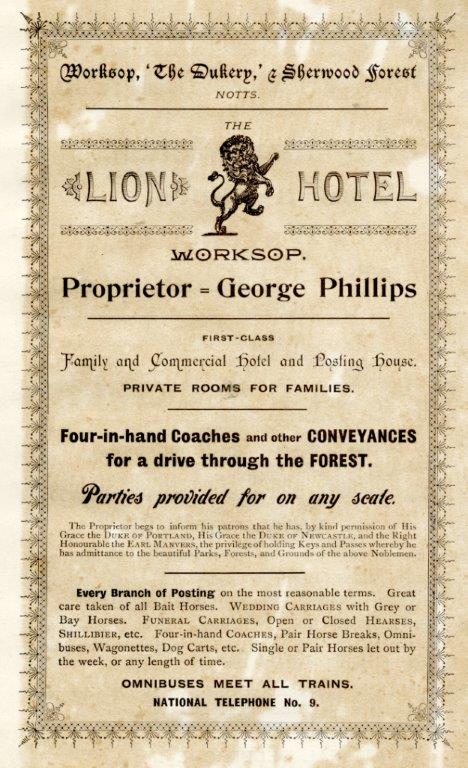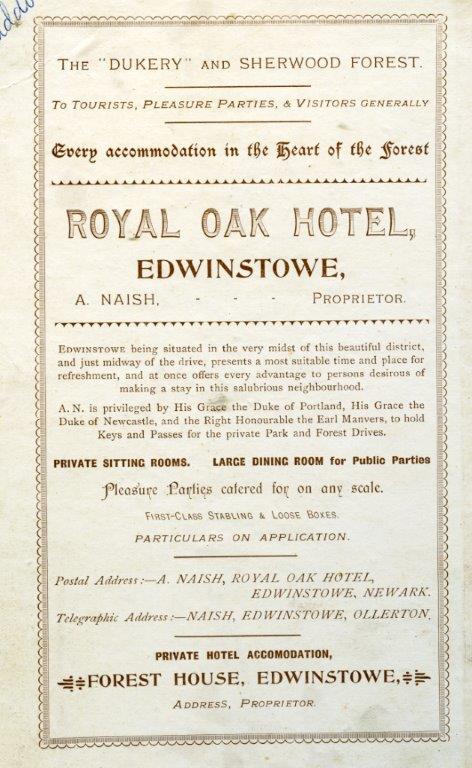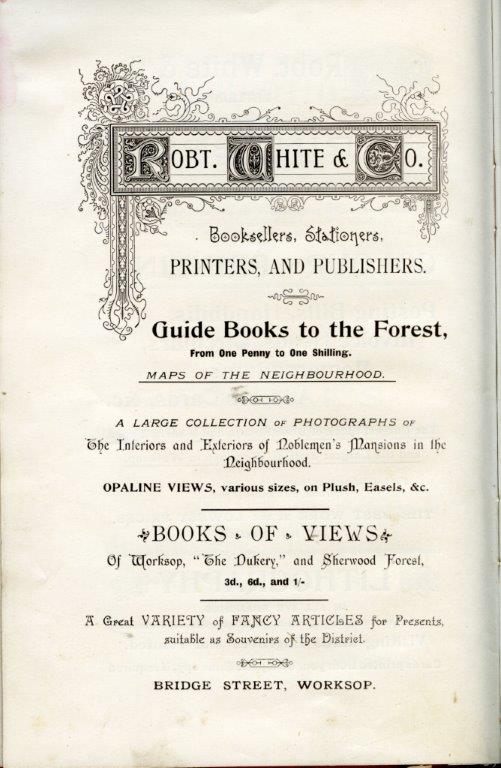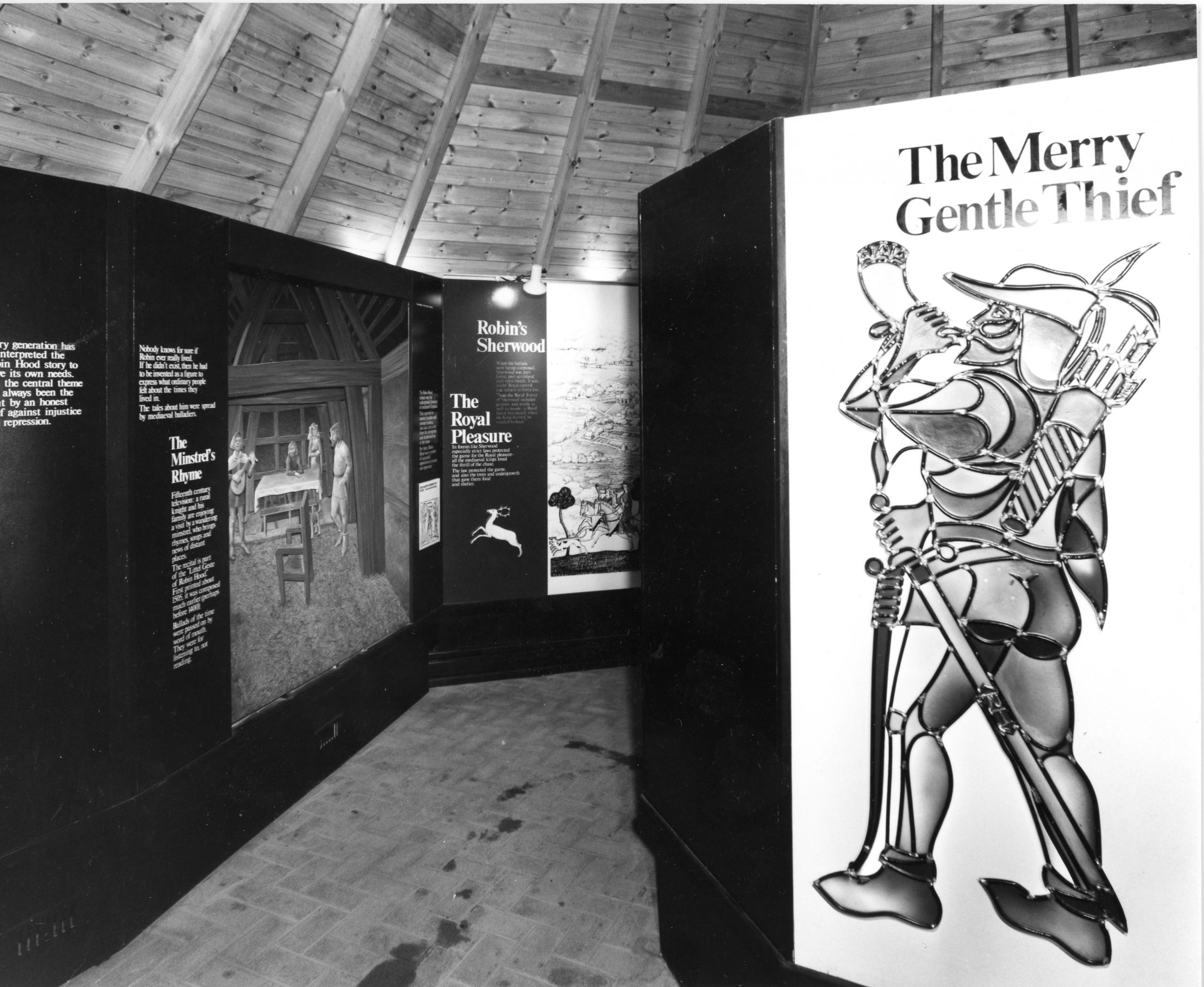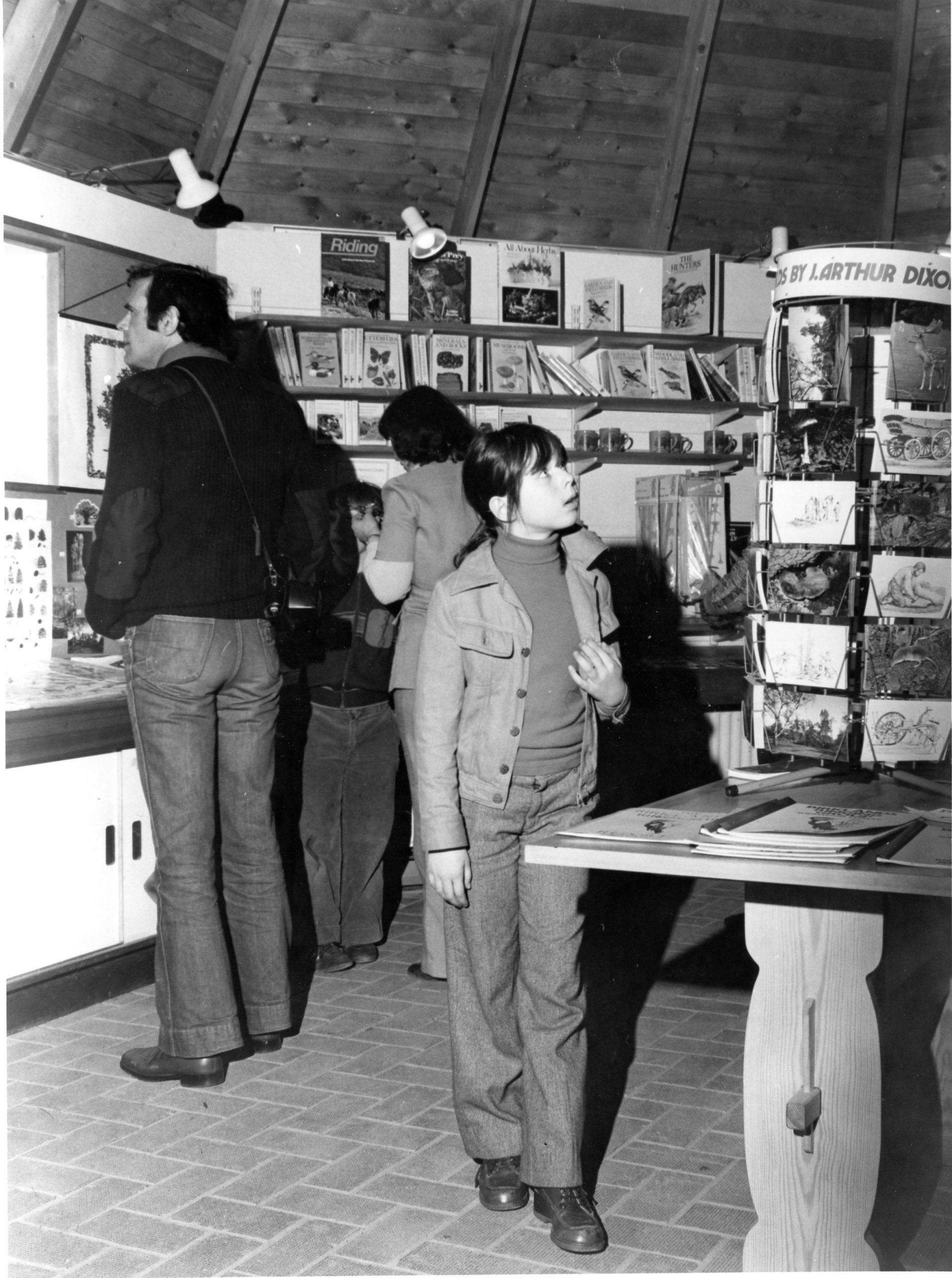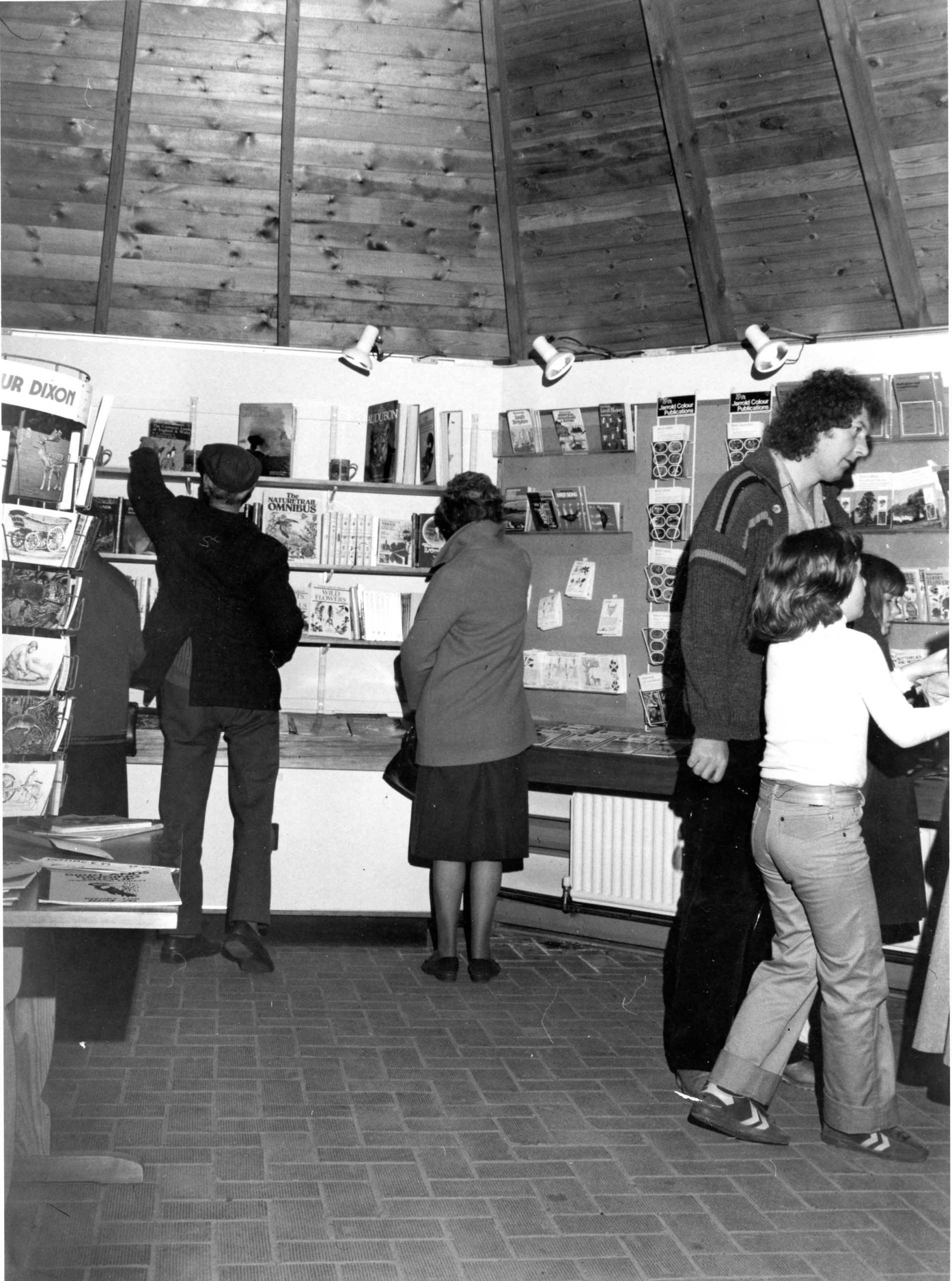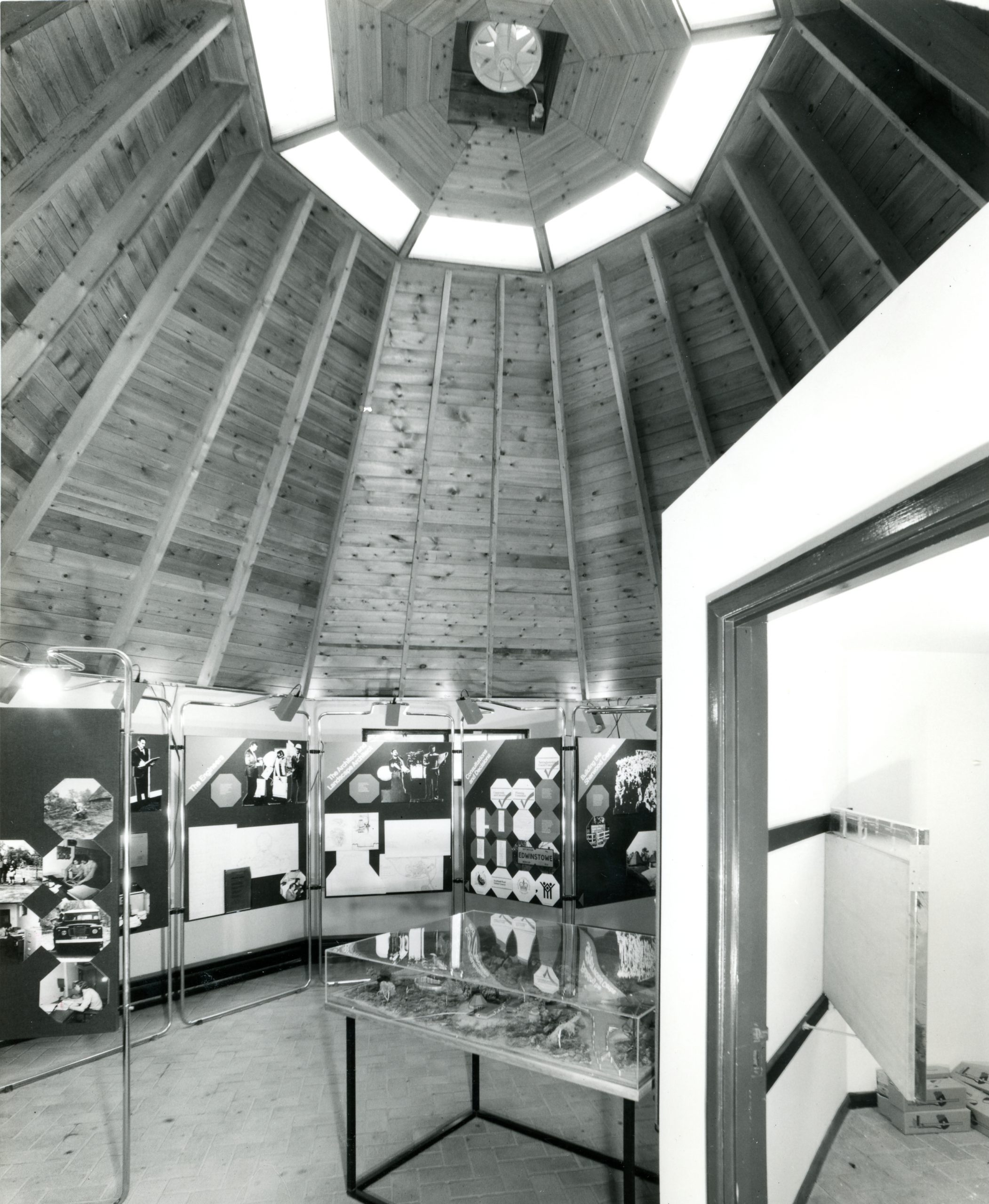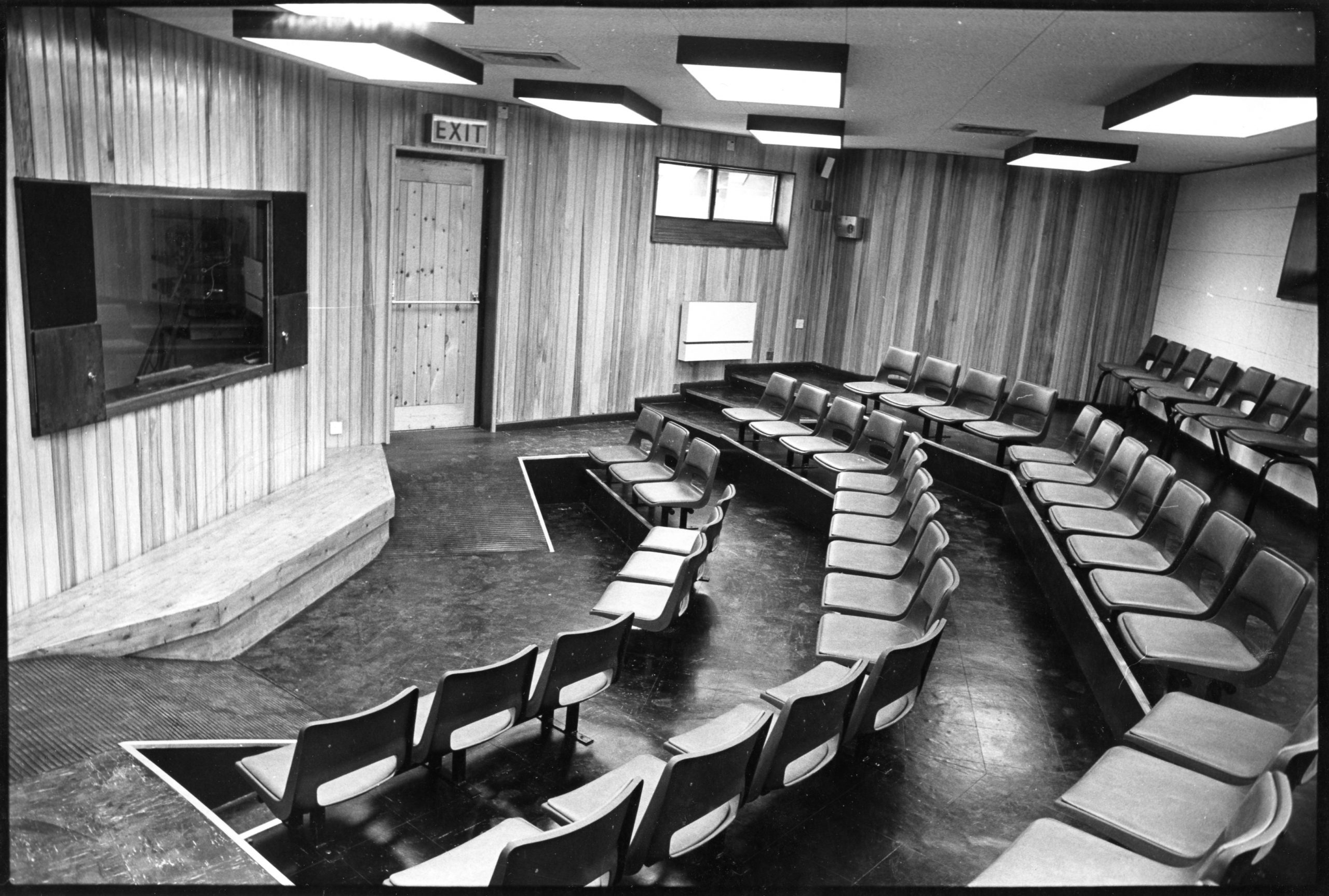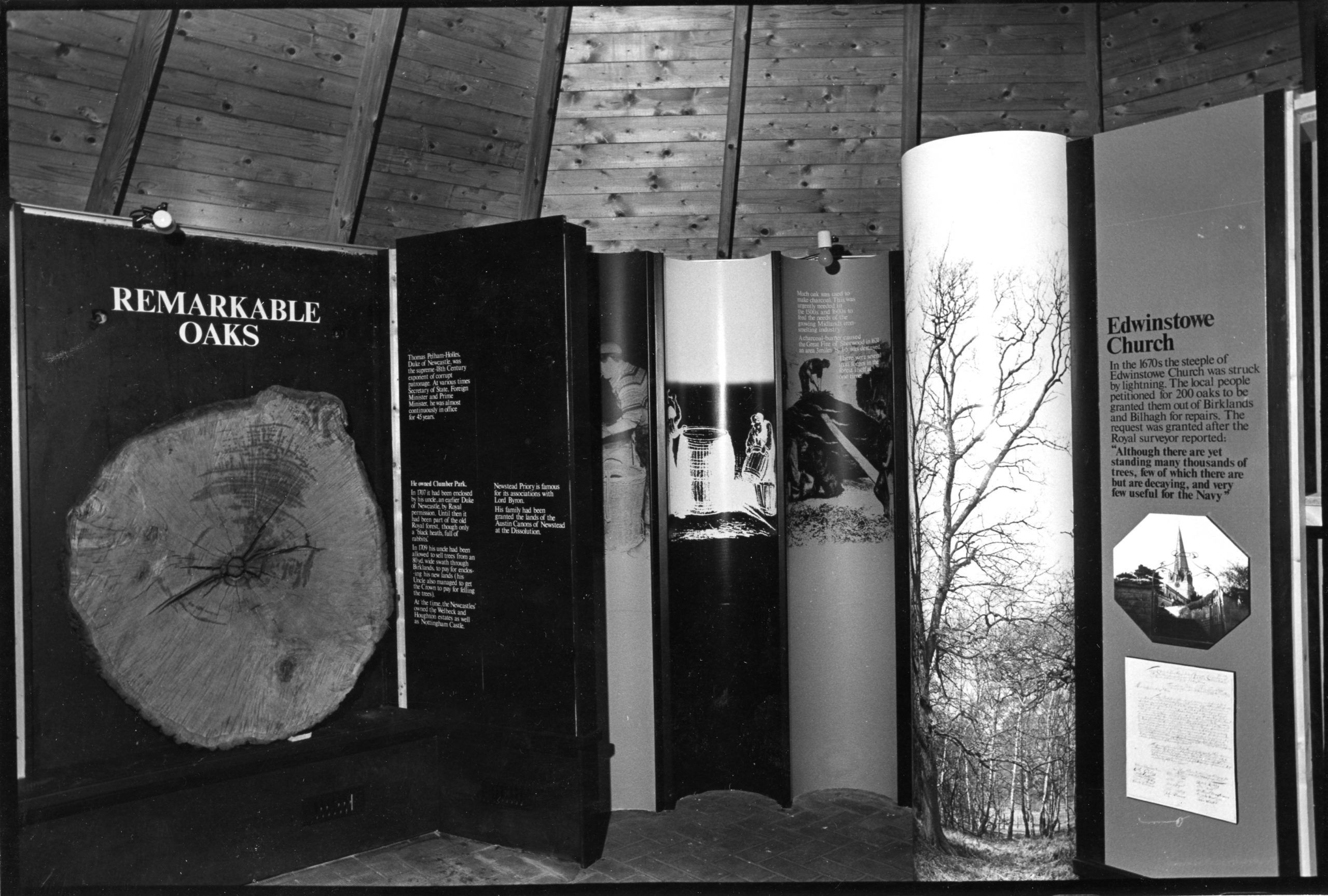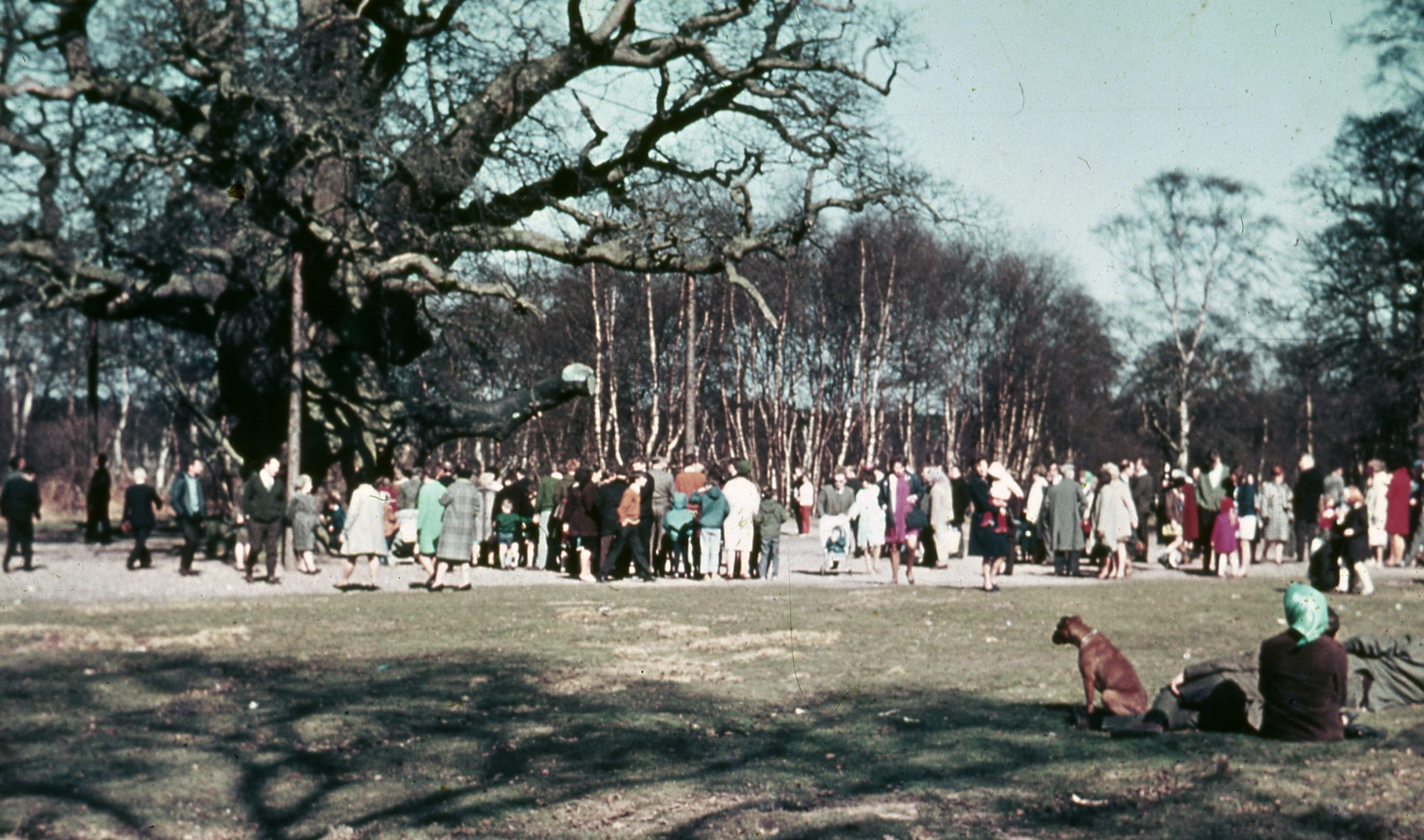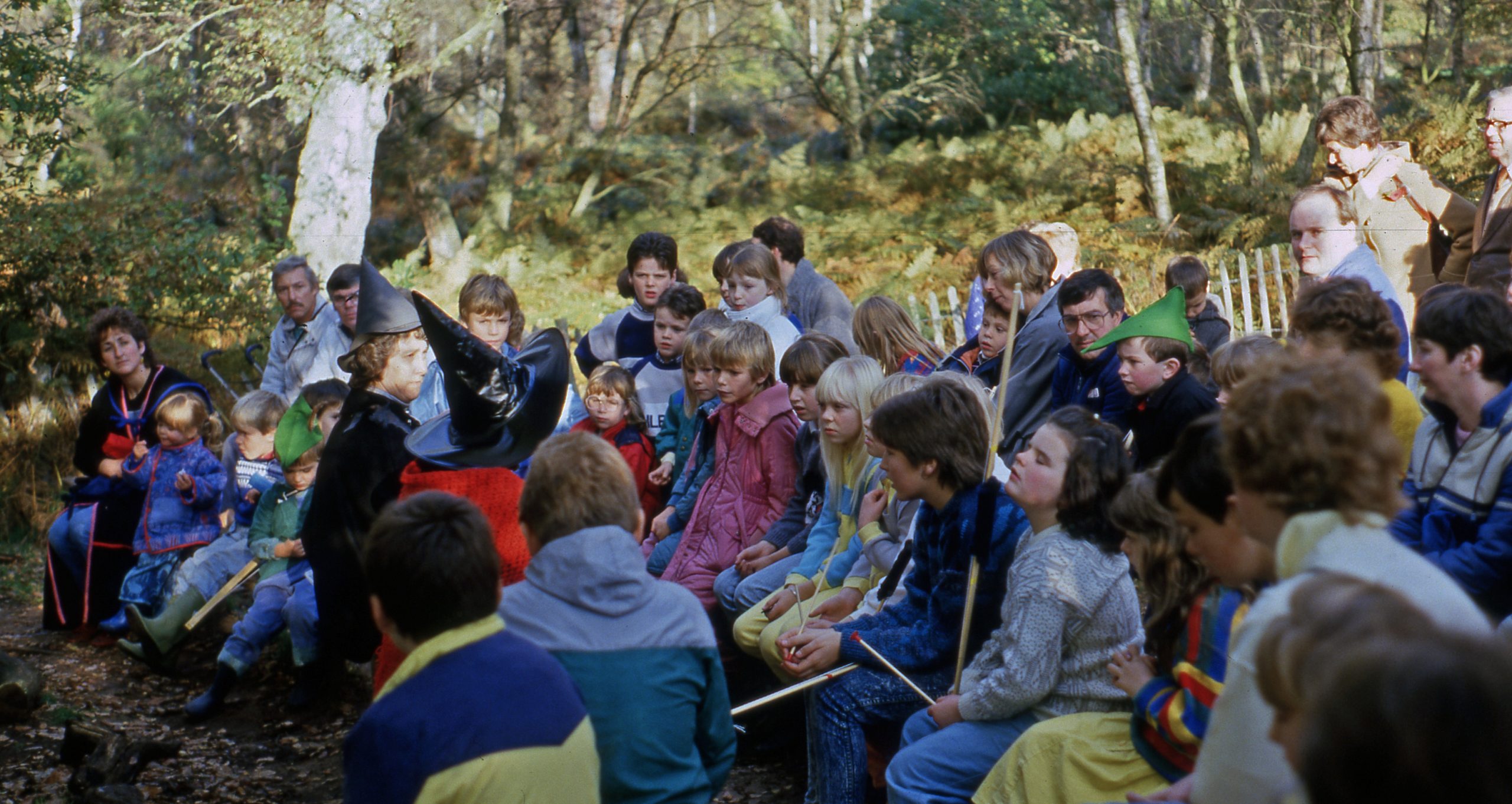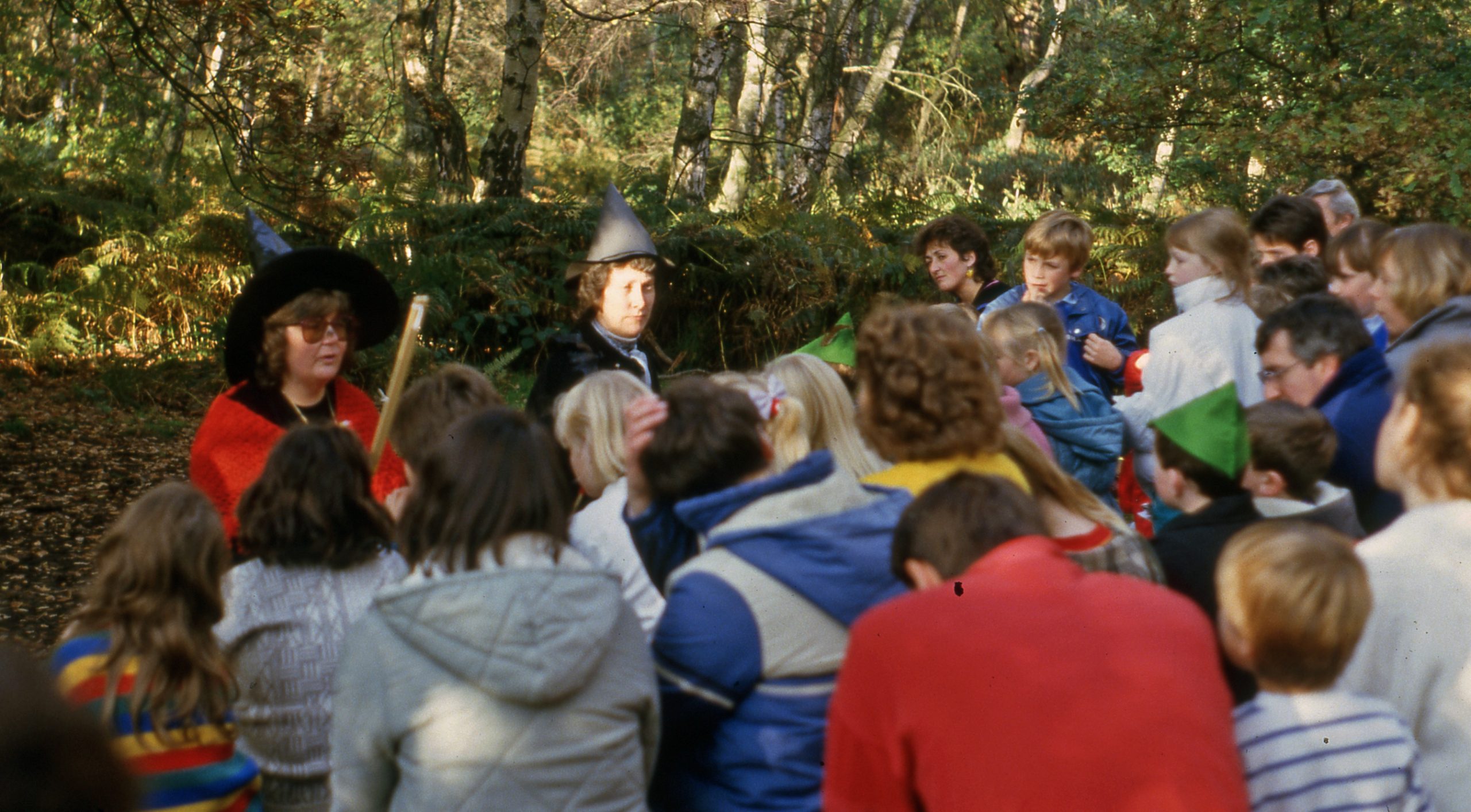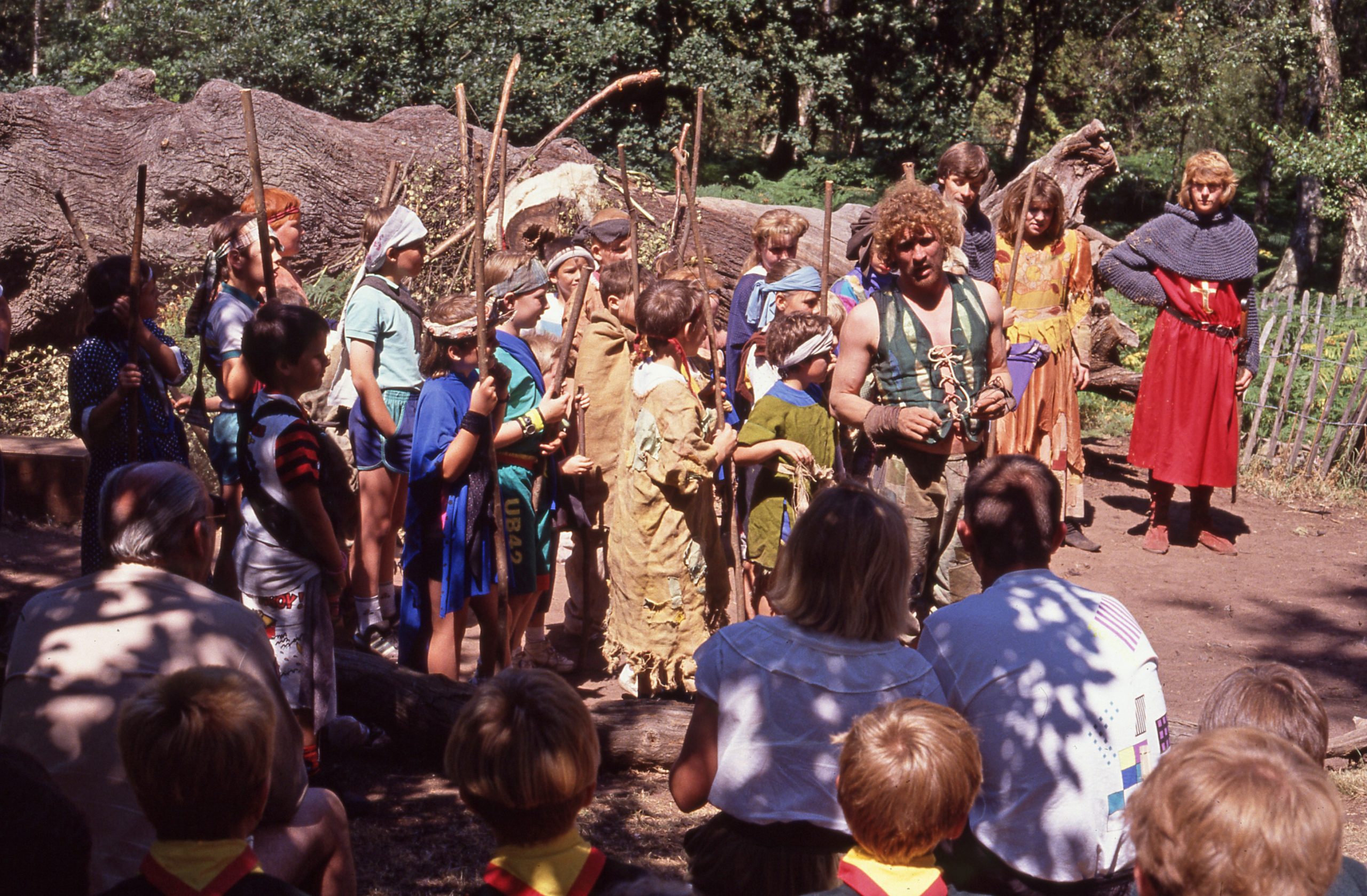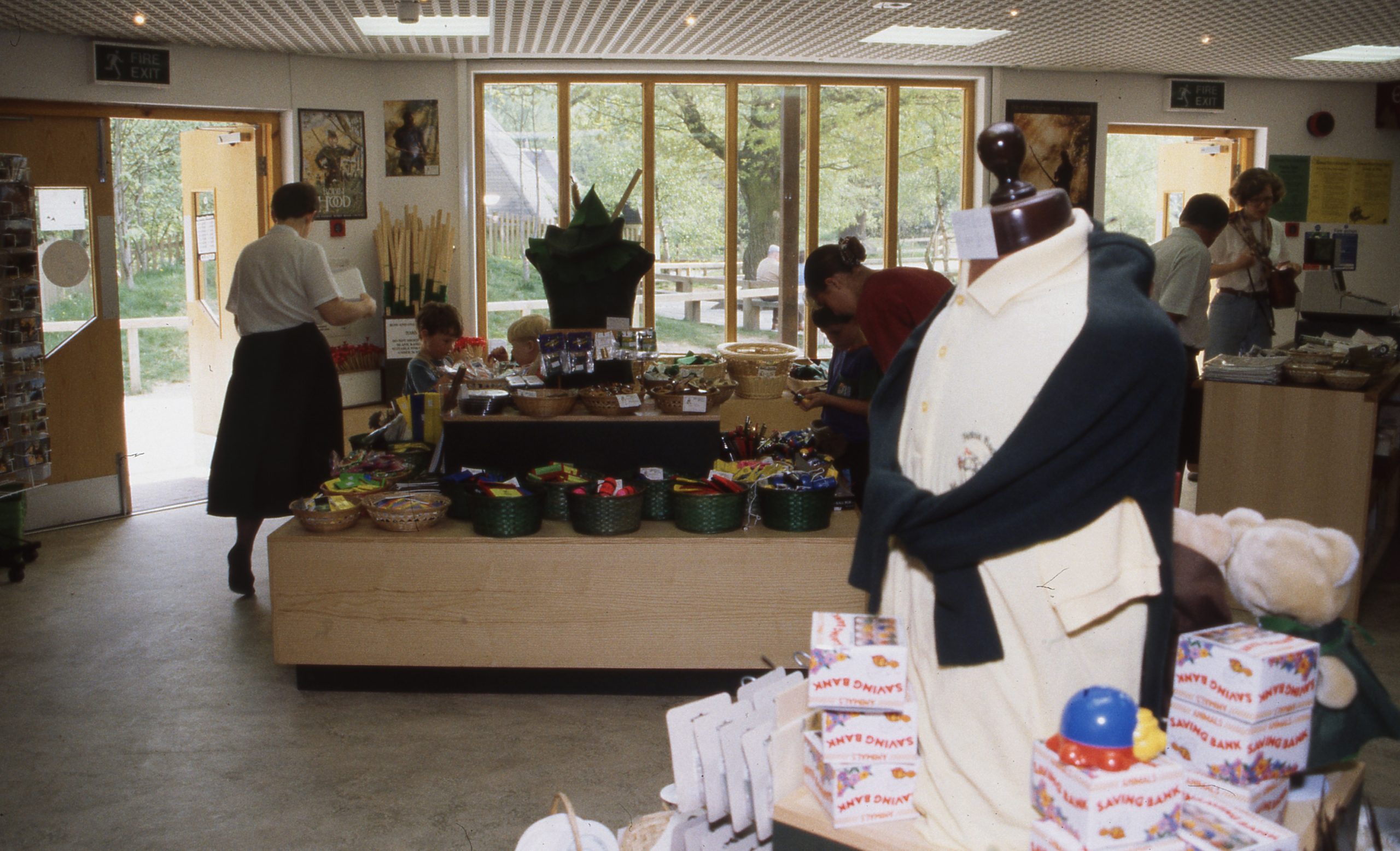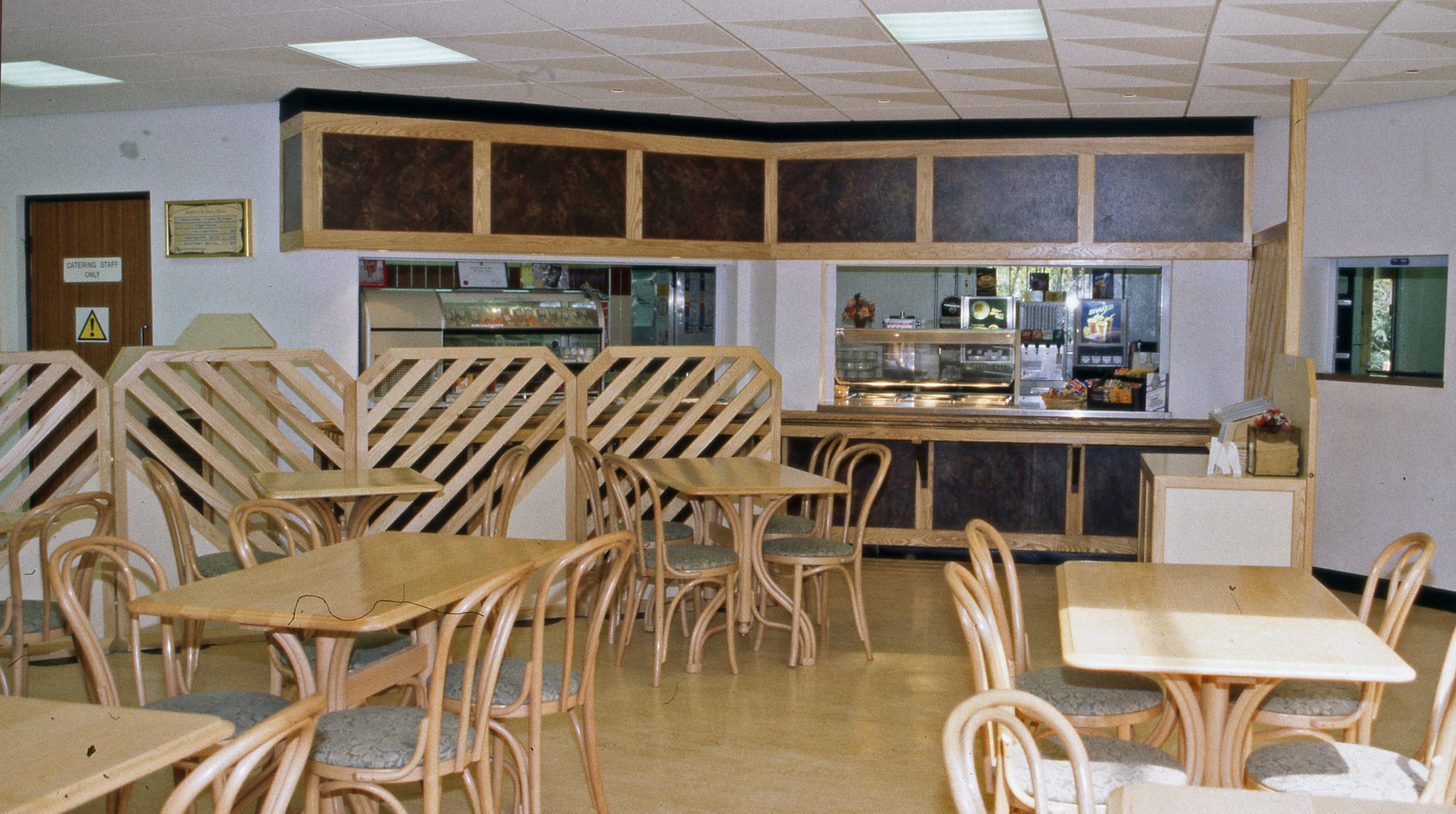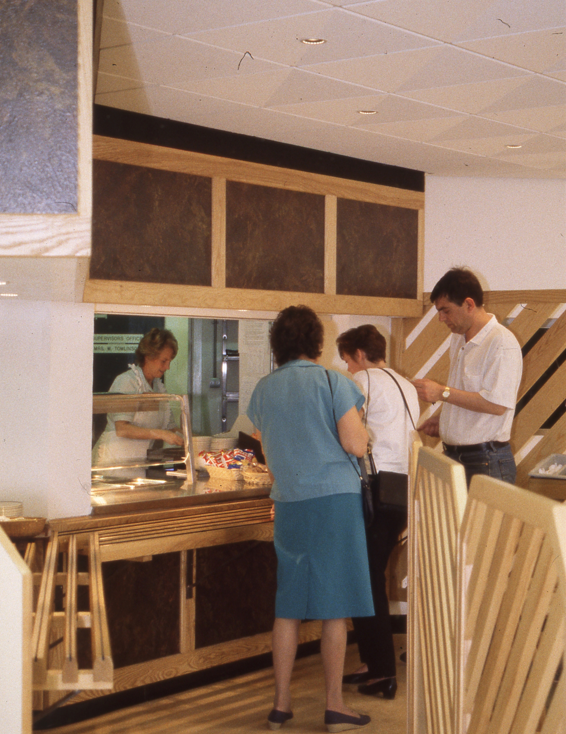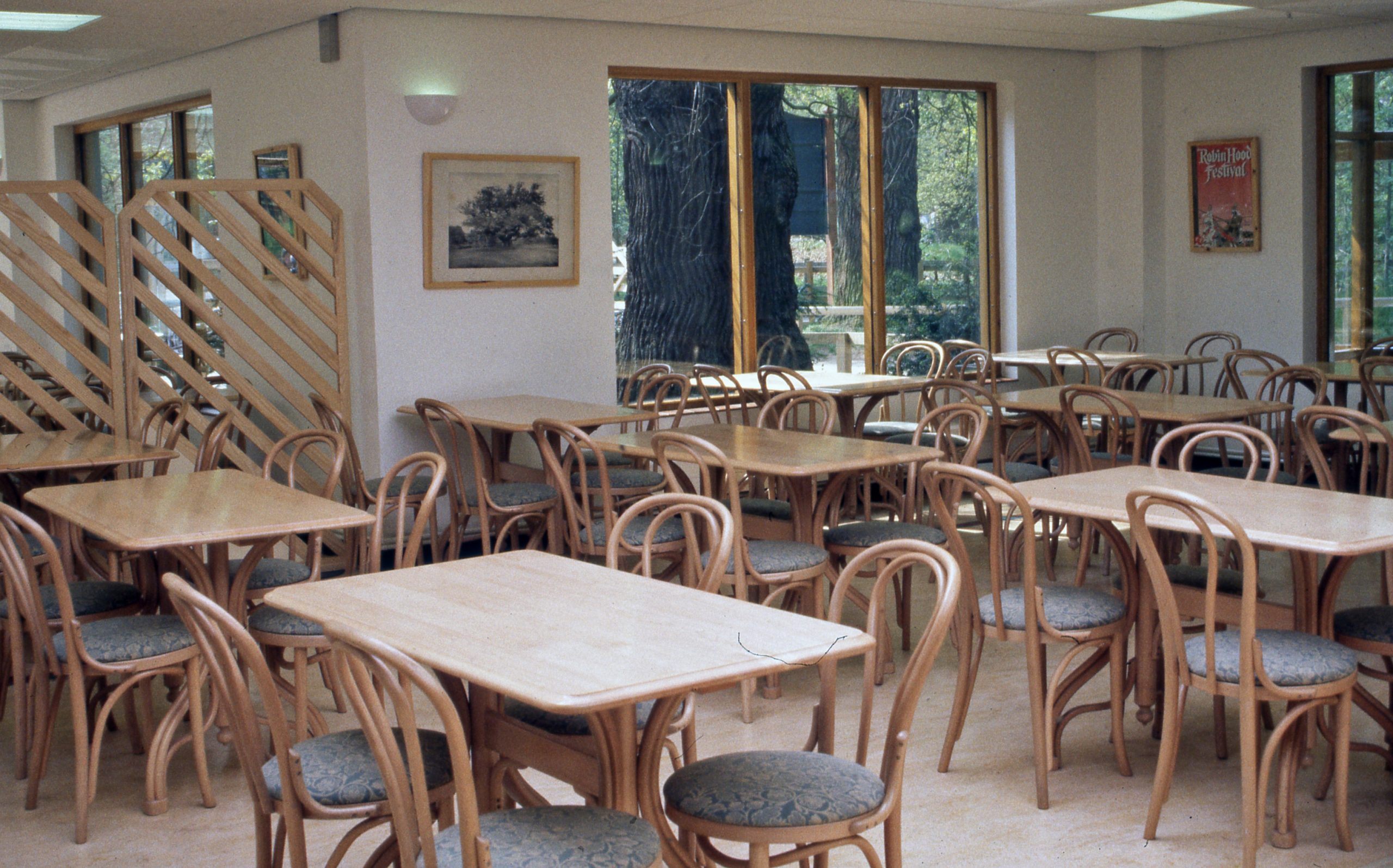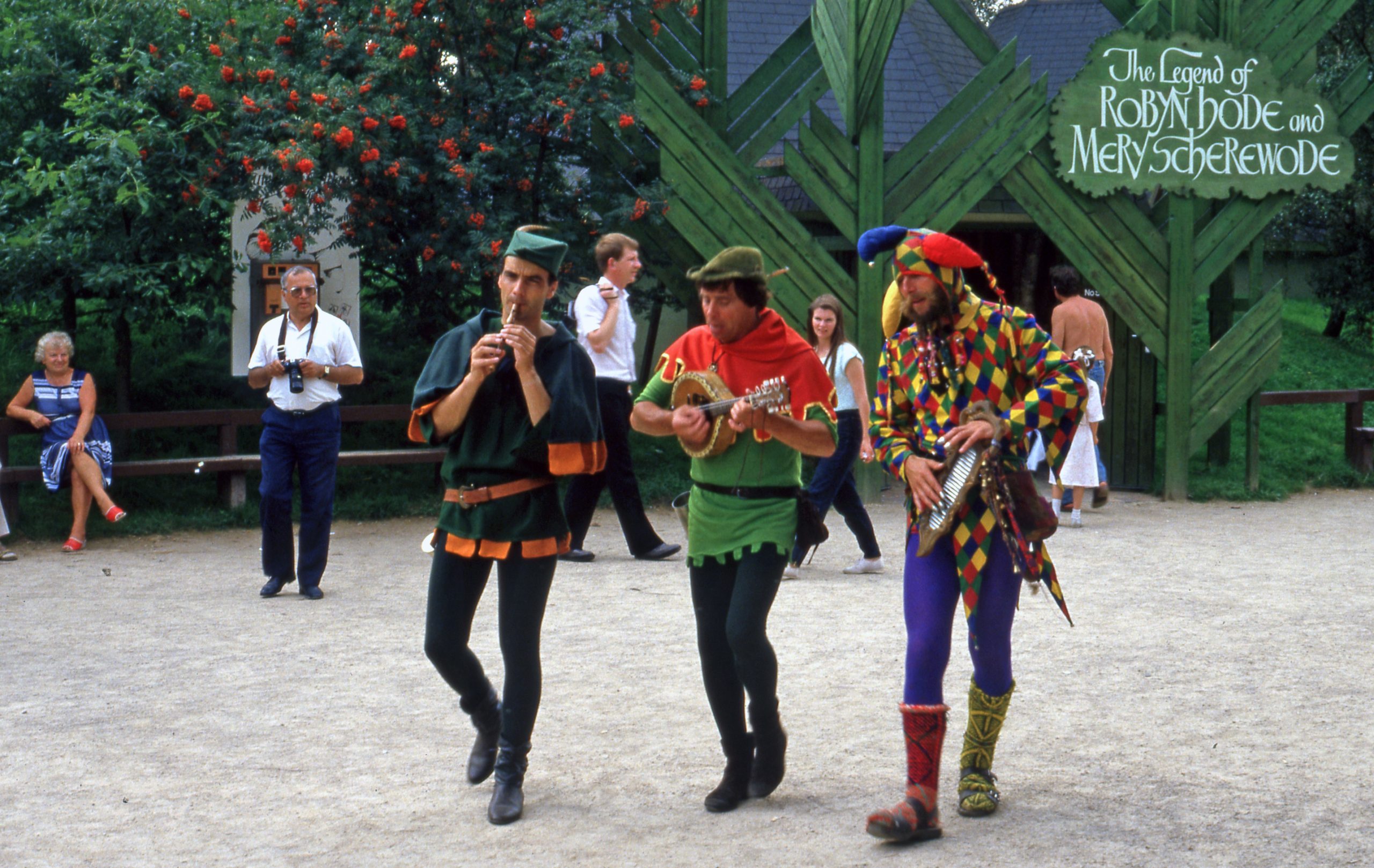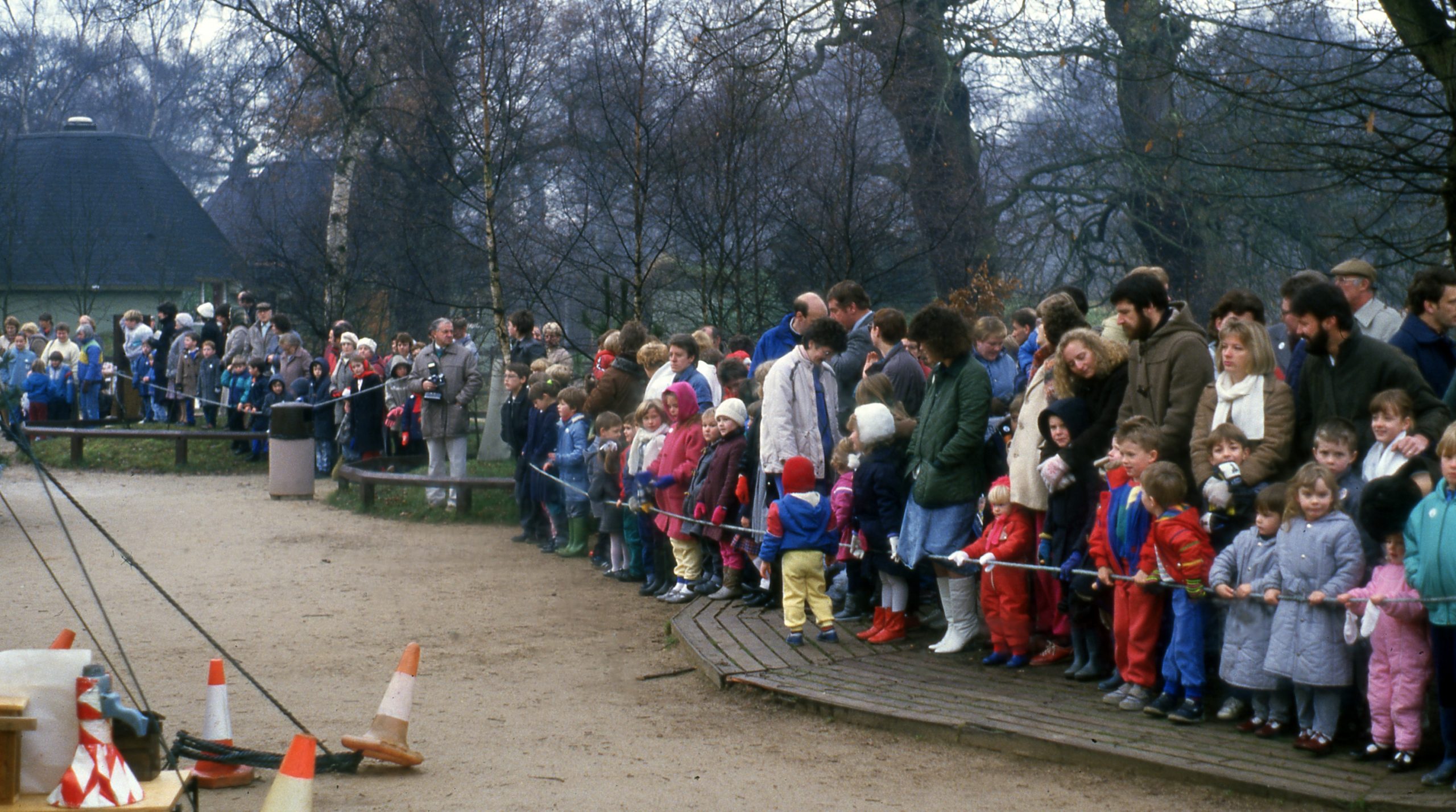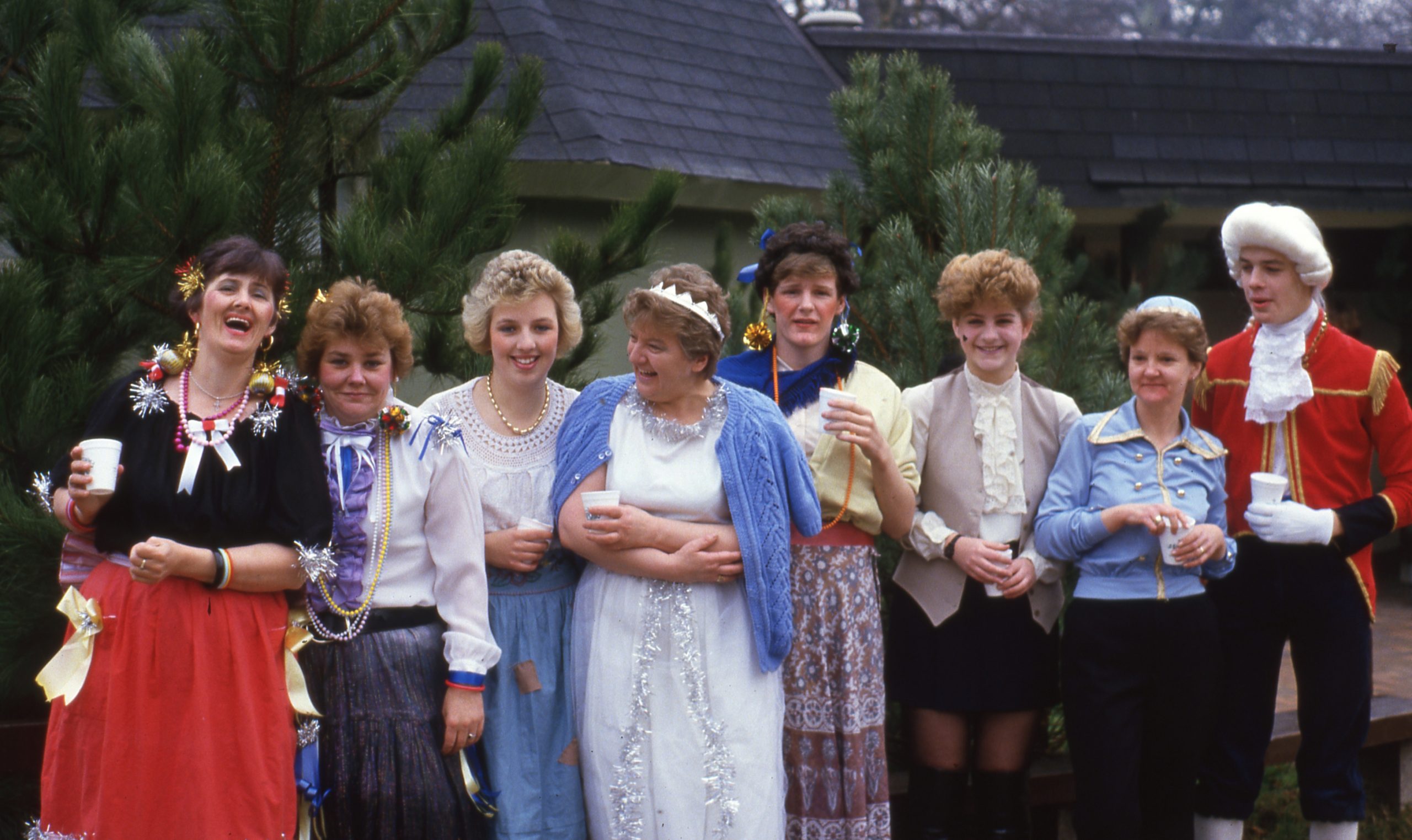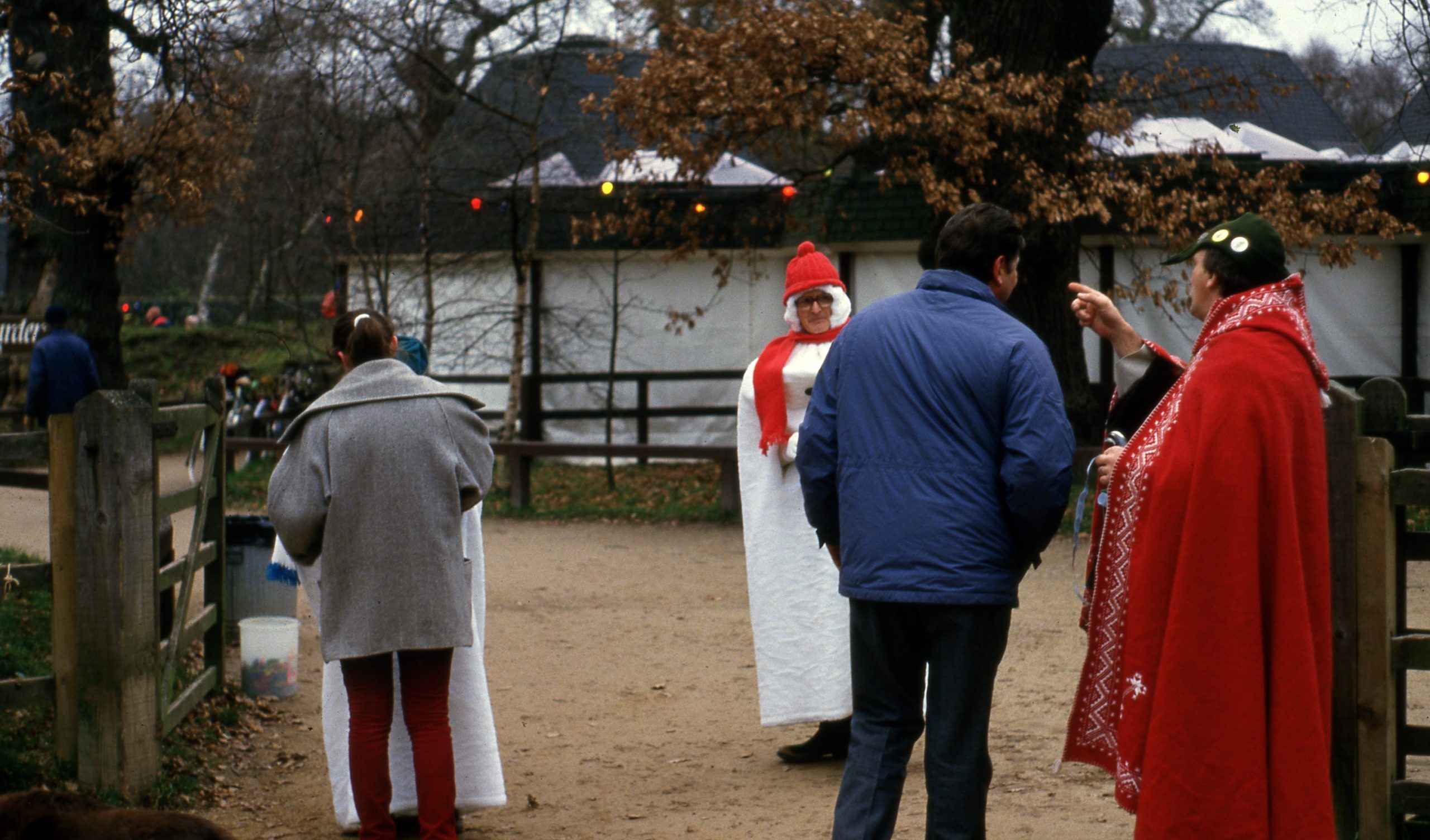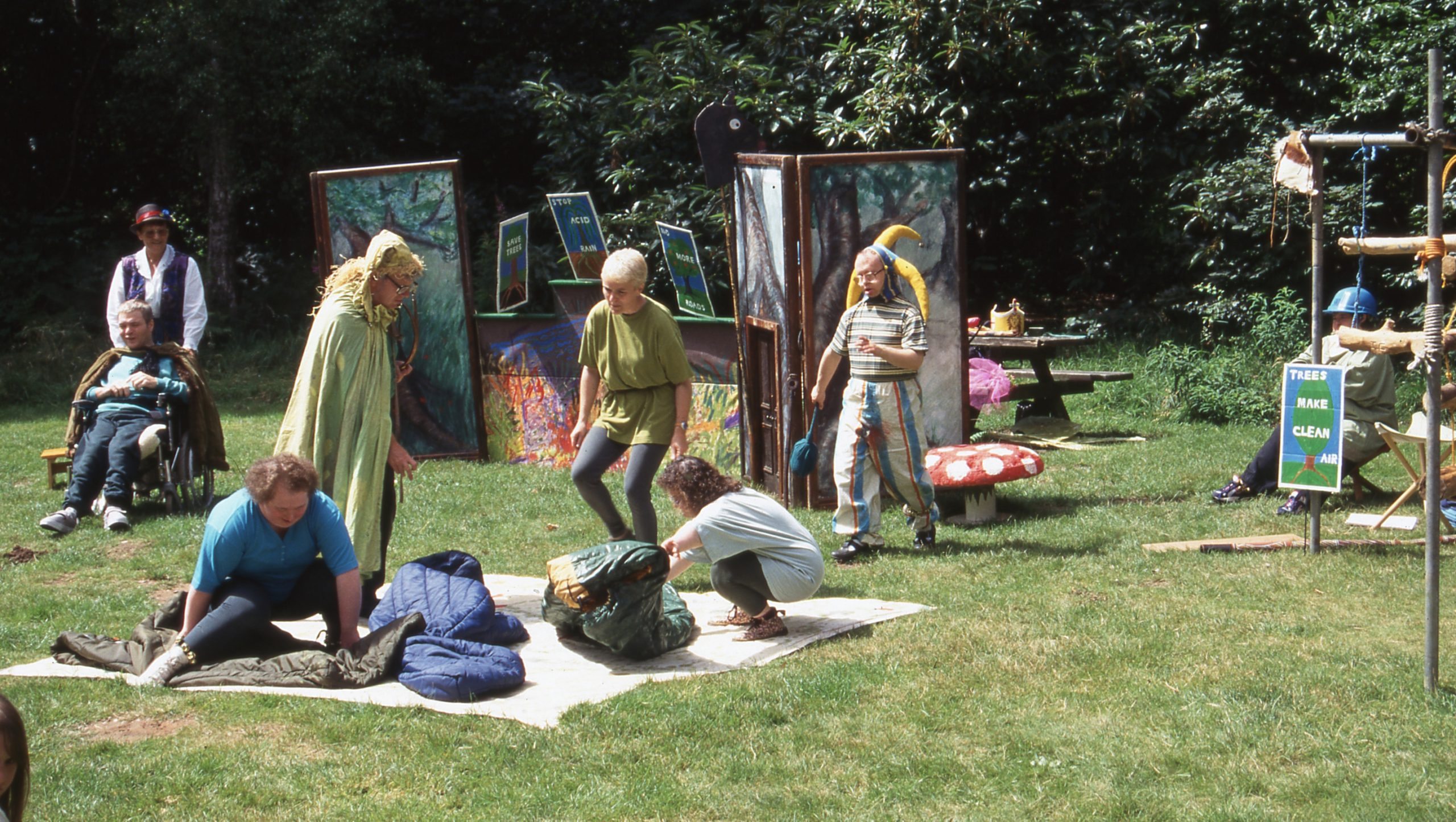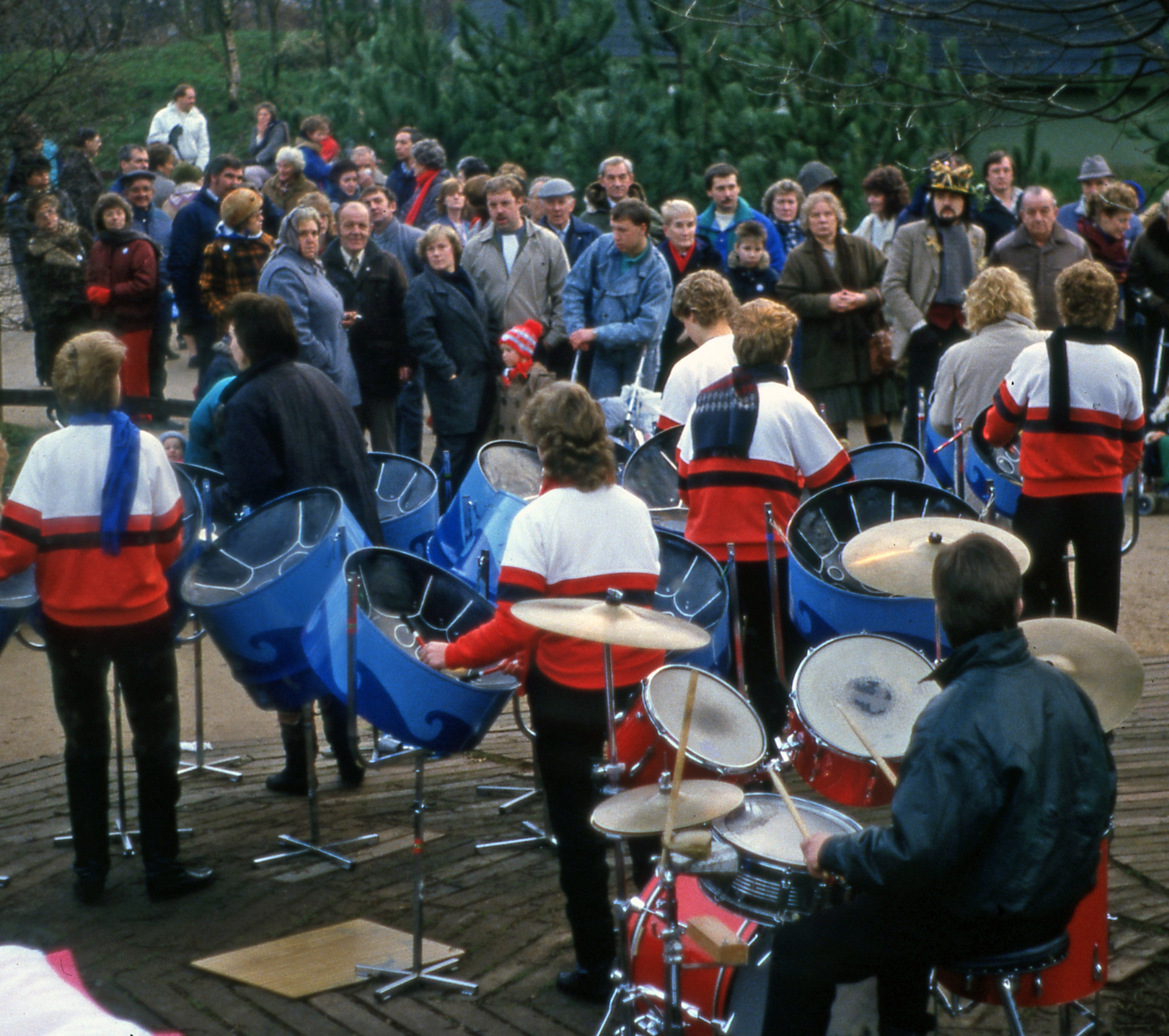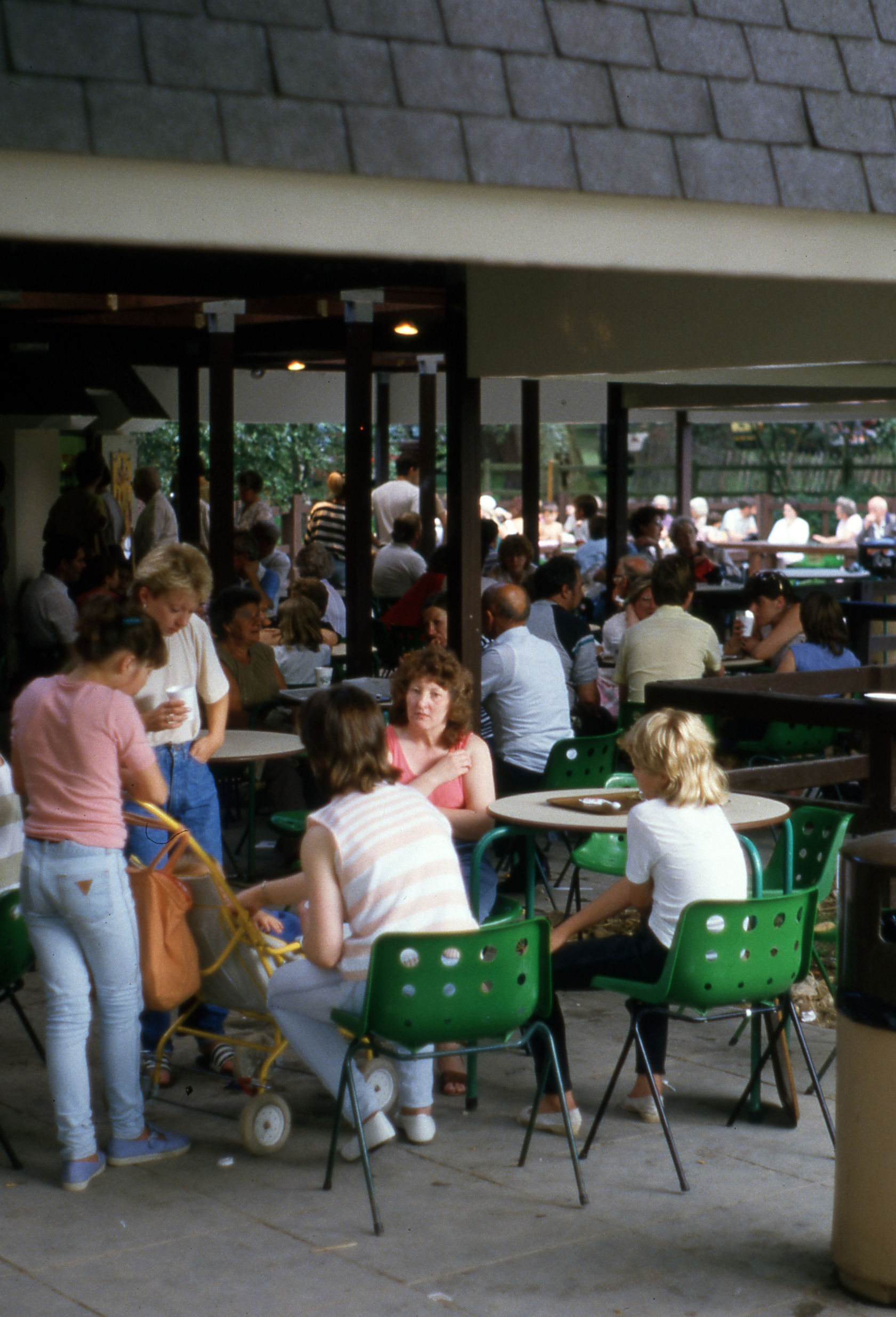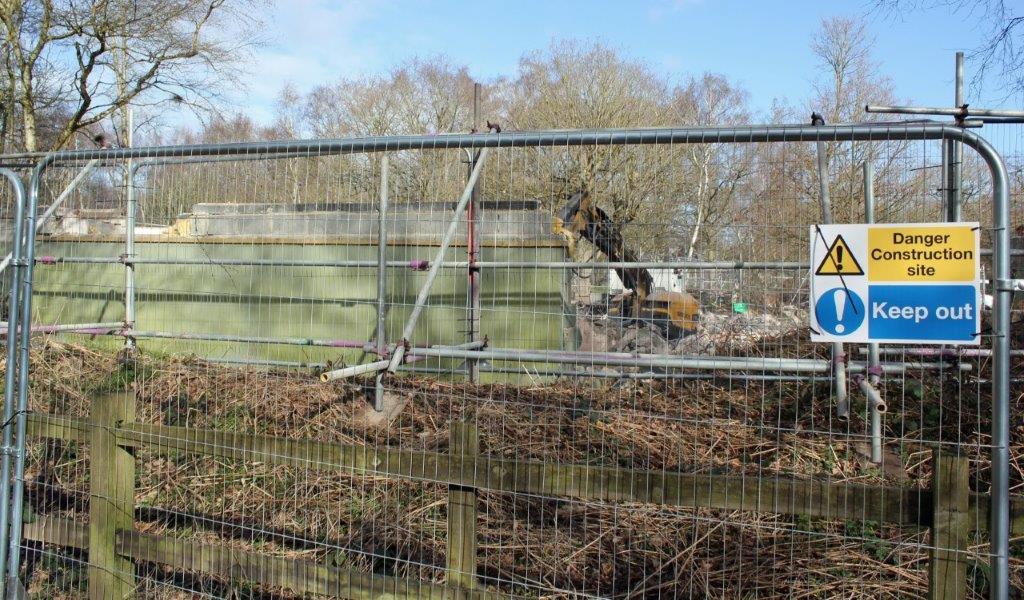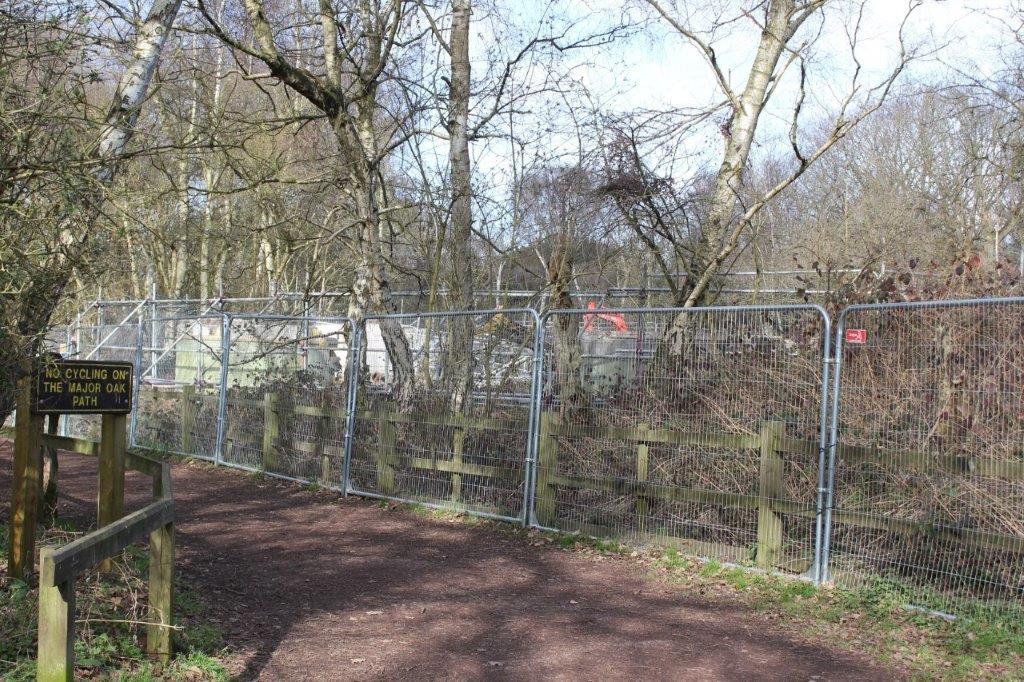The following article was printed 100 years ago in the September, 1897 edition of the Mansfield and North Notts. Advertiser.
The DEVELOPMENT of Edwinstowe is being carefully watched by persons who would like to get a foothold, an application was made to the Worksop Bench, on Wednesday, on behalf of a Sheffield company for a provisional license for premises proposed to be erected near the railway station.
The Bench considered the application to be premature, and there it ends for the present, but doubtless be heard again.
Within the large hotel built by Mansfield Brewery Company, and refreshment rooms at the station, added to the previous accommodation at Edwinstowe, there should be little need for more provision of this kind.
The East to West Company has conveyed nearly 84,000 passengers to Edwinstowe from March to the first week in September, but Edwinstowe can easily cater for such a host, when spread over the season.
This article is taken from the ‘People of Edwinstowe ‘by Margaret Woodhead
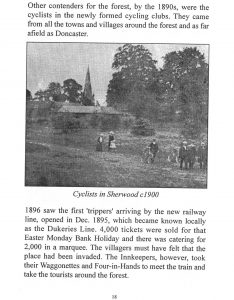
Cyclists to the forest were fortunate in being granted certain privileges by the Duke of Portland (President of the C.T.C.) in that many of the lovely carriage drives over the estate are open to them all at all times. Passage may also be made through the unique underground tunnel extending between the villages of Norton and Welbeck.
By arrangement with the ‘Ducal’ owners, selected coach owners were allowed to drive their vehicles on fixed routes through fixed routes on each Tuesday, Thursday and Saturdays of the Summer season. The laden brakes journeyed to Clumber and then Thoresby before arriving at Edwinstowe. Only members of the Dukeries Posting Proprietors’ Association had keys to unlock the park gates, each driver had to wear an arm band and a badge with his registered number on it. There were enamelled metal plates with do’s and don’ts were hammered to gates and trees. One of these plates was found in an Edwinstowe garden. In April, 1973, at the age of 93, Mr Alfred Burton of Worksop, the last of the Dukeries coachman died.
People have been visiting Sherwood Forest/The Dukeries/Edwinstowe for many years and, for those who wonder why, the answer may be found below.
In the 19th century, people began to appreciate the natural beauty and splendour of the forest, with writers, poets and artists gaining inspiration from the surroundings.
In Mike Jackson’s booklet “The Story of a Forest Village” he mentioned that Charles Reece Pemberton (1790-1840) British actor, dramatist and lecturer, was one of the first to proclaim the beauties of Sherwood. Following a visit in 1834 he wrote “A Peep into Sherwood Forest” and stated that “Bilhaugh alone worth walking a hundred miles barefoot to see”. Gazing at the decaying trunks of the veteran oaks reminded him of “ruined Palmyra”.
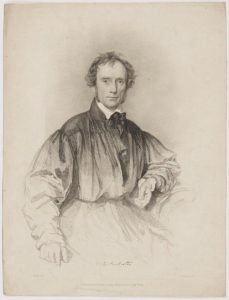 Charles Reece Pemberton. Wikipedia
Charles Reece Pemberton. Wikipedia
The next year, Washington Irving, (1783-1869) who was an American short-story writer, essayist, biographer, historian and diplomat of the early 19th century, rode out from Newstead Abbey, home of Lord Byron who was an admirer. His quest was for any signs of Robin Hood’s Sherwood, and he professed his delight in the remaining acres of unspoilt, unplanned, untampered woodland. He wrote of the “patriarchs” of the forest, “shattered, hollow and moss-grown” and of the “natural valleys and greenwood glades, carpeted with grass and shaded by lofty and beautiful beeches.”
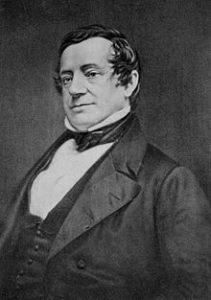
Washington Irving
Christopher Thomson (1799-1871) lived in Edwinstowe for many years. He was a man of many talents, being a creditable artist and author of “An Autobiography of an Artisan” published in 1847.
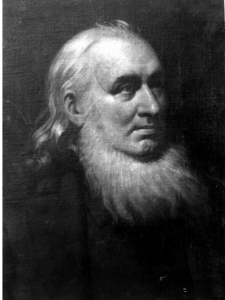
https://edwinstowehistory.org.uk/local-history/people/artists/christopher-thomson/
W J Sterland, the Ollerton grocer and bird watcher, who lived alongside the River Maun, painted an idyllic picture of the forest when he wrote “The Birds of Sherwood Forest”, originally published in 1869. His work was selected by scholars as being culturally important.
Joseph Rodgers, landscape painter and author of “The Scenery of Sherwood Forest” originally published in 1908, saw beauty in the local scenery even in the midst of winter.
A small group known as the “Sherwood School” of poets gained their inspiration from wandering in Birklands and Bilhagh. Prominent among them was Robert Millhouse (1788-1839) a poor Nottingham stockinger who was dubbed “The Burns of Sherwood Forest”.
There was John Leech (1817-1864) a British caricaturist and celebrated illustrator, best known for his work for Punch magazine and as an illustrator of Charles Dickens “A Christmas Carol”.
John Wright Barker, artist, (1864-1941) figure painter lived in Bradford until 1885 when he moved to Edwinstowe. In 1901 he left for Hampstead. He was best known as a painter of hunting scenes and animals, including scenes from the local Rufford Hunt. His paintings were hung on the walls of the Royal Academy.
Some years before the production of “The Foresters”, Alfred, Lord Tennyson, (1809-1892) in company with his son, Mr. Hallam Tennyson, paid a visit to Sherwood Forest. The scene of the play is laid in Sherwood, and Tennyson must have had the Major Oak in mind when writing this passage :
| “Robin Hood. | Where lies that cask of wine whereof we plundered |
| The Norman Prelate ? | |
| Little John. | In that Oak where twelve |
| Can stand inside nor touch each other.”
Alfred, Lord Tennyson. Wikipedia |
When the station opened in Worksop in 1849 droves of trippers travelled the forest roads in horse drawn brakes and charabancs, having been met there. Numbers would increase when the station opened in Edwinstowe.

c.1910
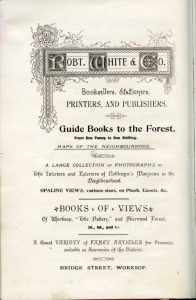
Book of Views c.1910

A select number of Worksop coach proprietors were allowed to drive their vehicles along a fixed route through the parks each Tuesday, Thursday and Saturday of the summer season. Having met the trains, the laden brakes first journeyed through Clumber Park, then Thoresby Park, arriving at Ollerton or Edwinstowe in time for lunch.
Refreshed, the parties moved on through Welbeck Park and back to Worksop for tea, a little shopping and the return train. Only members of the Dukeries Posting Proprietors’ Association were supplied with keys to unlock the park gates, each driver had to wear an arm band and a badge with his own registered number on it, while enamelled metal plates bearing a comprehensive list of do’s and don’ts were hammered to gate posts and trees along the route.
On fine days in high summer numbers of visitors could be counted in hundreds rather than in occasional family groups. On one Saturday in July 1876 one work’s outing party from Huddersfield numbered 84 alone and they dined at Edwinstowe. Providing the necessary catering, transport and accommodation amenities brought a new source of employment and revenue to the village. Restaurant facilities and accommodation were available at the Royal Oak, (proprietor Mr Reuben Perry); Mr C Naish’s private hotel; and probably at the other village inns. Visitors would take home mementoes of their visits by purchasing souvenirs from shops: A. Tudsbury and Sons, boasted of royal patronage, and tempted the visitor with their carvings in oak of bird, beast, flower and foliage, brackets, casquets, frames and the like.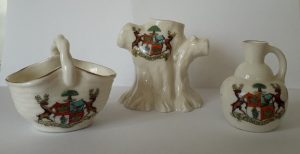
Goss Pottery – Crested Ware
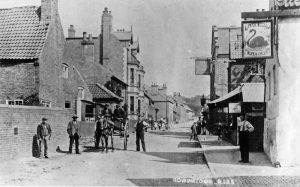
High Street 1910
Mr B Stocks, landscape photographer offered views of the village, the ducal houses and, as his speciality, “a large selection of Photographs of Forest Scenery”.
There is little wonder that in 1890 the village schoolmaster, Mr William Curtis, lamented in his log book “Edwinstowe is becoming more and more a holiday resort with the usual result”.
With the coming of the Lancashire, Derbyshire and East Coast Company’s line from Chesterfield, passing through Edwinstowe to Lincoln, local newspapers gave regular reports:
14th February, 1896 – Retford & Gainsborough Times :
“With a view to providing further hotel accommodation for the thousands of visitors to ‘The Dukeries’, the Mansfield Brewery Company are erecting a magnificent family hotel and refreshment room combined”.
“Behind the main building commodious stables and coach houses are arranged and the remaining part of the site with be laid out as pleasure gardens, with tennis courts, etc.”
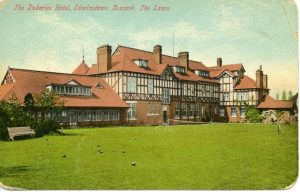
On the 18th December, 1896 Edwinstowe Station opened for passenger traffic. (The route was referred to as the “The Dukeries Line”.) The first train left the station at 8.25 a.m., gaily decorated with flags, and reached Ollerton some four minutes later.

First Train to leave Edwinstowe Station – 1896
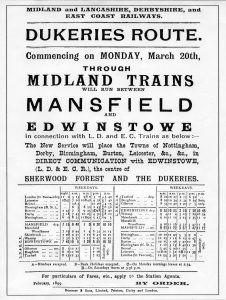
https://edwinstowehistory.org.uk/local-history/transport/rail

National Railway Museum, York. Post Card.
Mansfield Chronicle Advertiser – 16th April 1897:
“The opening up of the Dukeries by the Lancashire, Derbyshire and East Coast Company’s line from Chesterfield to Lincoln promised to bring about important changes in Edwinstowe.
“The place has been regarded as a convenient halting place for trippers to the Dukeries, and with the advent of the railway it is anticipated that while formerly visitors were counted by hundreds, they will now be numbered in thousands.
“During the coming Easter holidays cheap tickets are advertised to run from all parts, 4,000 tickets having been issued for use on the systems of the M. S. and L. Midland, and the Great Northern Companies from distant places. Mr Bird, a Sheffield caterer, will, on Bank Holiday, provide luncheon for 2,000 in Marquees adjoining the station.”
The local police force was increased in anticipation of the extra visitors, to include a private as well as a sergeant, and the junior was to have a bicycle so that he could cover a larger area of the forest.
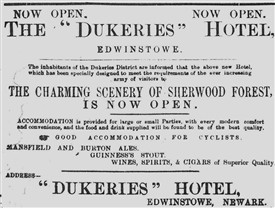
Mansfield Advertiser. 23rd July, 1897
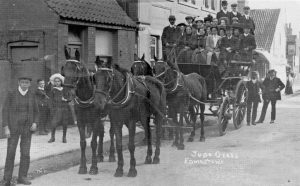
Dukeries tours from the High Street
Some residents purchased brakes and conveyances to convey trippers round the parks and in 1897, under the Chairmanship of Mr Naish, banded together and called themselves the “Edwinstowe Carriage Owners’ Association”. Rules were drawn up with a view to protecting the property of the various noble owners, whose estates comprise the Dukeries. Visitors were met at Edwinstowe Station and travelled by four-in-hand or wagonette along Mansfield Road via Clipstone to Rufford Park. After a refreshment stop at the Jug & Glass or Dukeries Hotel they visited the Major Oak. They then went around the grounds of Thoresby Hall via Greyhound Lodge, Clumber Bridge and Lime Tree Avenue. Operators had keys to the grounds of the ducal estates.
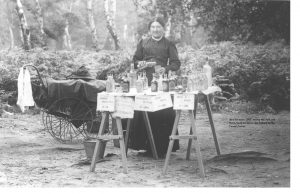
Photo of refreshments at Forest Corner served by Granny Bullimore, (previously thought to be Mrs Robinson) – 1906
On 5th August, 1898 the Mansfield Chronicle Advertiser published the following letter addressed by Mr T Waring Turner, on behalf of his Grace the Duke of Portland, to posting proprietors of the district:
“Dear Sir, It has been reported to the Duke of Portland that recently conveyances taking tourists through the Dukeries have been overloaded, and this has been remarked upon by passers by. His Grace is determined this must be discontinued, or he will be compelled to close his drives to the public. I ask you therefore, to use your ultimate endeavour to prevent all attempts at overloading carriages, which must be sufficiently horsed for any load they may have to take; and I request further, that you report to me any driver and carriage owner whom you may observe acting contrary to his Grace’s instructions.
“I regret it is necessary to give you this notice after the opinion of the Duke of Portland has already expressed as to overloading, and the driving of animals too small for the number of persons they have to draw, I am hours faithfully”
A report in the Retford and Gainsborough Times mentioned that on 1st June 1900 there was an inspection of the turnouts of the Carriage Owners’ Association, at the station, where traps and every turnout was passed by inspectors, one of whom was from Sutton in Ashfield and one from Mansfield. The Duke of Portland and the Hon. Evelyn Pierrepont inspected each turnout and expressed satisfaction especially as to the condition of the horses.
In the Retford & Gainsborough Times dated 29th June, 1900, reference was made to the fact that “the number of visitors to this famous little village in the heart of the Dukeries continues to increase every week, the private drives through the Parks being now practically all open three days a week. Also, the railway, with its extra facilities is bringing in a great number of people.”
Below is one of the many adverts encouraging people to visit the forest in the early 1900s.

June 1915 – Walks in Sherwood Forest
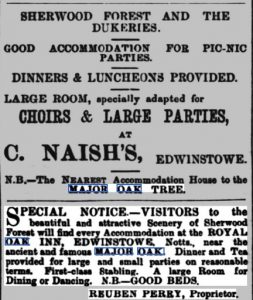
My First Visit to Sherwood Forest by R Beresford
At last the day had arrived, it was the summer of 1919 and we had been taking our penny each week, (it seemed for such a long while, to be able to go on the train to Edwinstowe and Sherwood Forest to visit the Major Oak which we had all read about in our class.
Our school was the Carter Lane mixed school, for there were no separate schools in those days, only Brunts and Queen Elizabeth Grammar Schools. After having our names ticked off in the register, the money we had saved was given to us, less sixpence each to pay our return fare on the train. I had got one shilling saved, and to have that much all at once seemed a fortune.
The day was lovely, warm and sunny, and walking in twos across Carter Lane down by the Rock by the Old Rock Houses, which at that time were still two homes to two families, and there was a Besom (broom made from twigs) makers cottage at the top of the Rock. When we arrived at the Great Central Station we had not long to wait and, as always, there was much excitement as the train drew into the station with the porters and teachers telling us all to stay away from the edge of the platform.
When we were all in the carriages with strict instructions not to put our heads out of the window in case we got sparks in our eyes from the engine, the journey went across the viaduct over Ratcliff Gate through the long cutting up to Ravensdale Farm where the Ravensdale Estate is now.
As we went close by Crown Farm Pit, which everyone knew was the name for Mansfield Colliery in those days where most of our fathers worked, you could see the fires under the great boilers which produced the steam to drive the two big winding engines for the colliery.

It was not long before we were stopping at Edwinstowe to begin our walk to Sherwood Forest. We went down towards the junction with Mill Lane you could see the ford through the river at the side of the bridge.
 Up the High Street past the cottages and shops (in those days more cottages than shops), there was a row of small cottages where the Library is now.
Up the High Street past the cottages and shops (in those days more cottages than shops), there was a row of small cottages where the Library is now.
After going over the cross-roads by the Royal Oak we made our way up Church Street to the Cricket Green where, in twos we were allowed to go to the house were Mrs. Shepherd lived, which at that time sold ice cream, jugs of tea, sandwiches and sweets, the first thing most of us did was to buy an ice cream a 1 pennyworth of sweets. We then made our way along the well-trodden paths to the Major Oak.

It seemed a tremendous tree with room inside the trunk for nine or ten children. The forest in those days was very dense and the bracken was high so we had strict instructions not to stray from the path in case we got lost.

 We played around the tree until the whistle was blown and we all had to return, ready to go back to the Cricket Green to have the lunch we had brought with us and, a drink of tea the teacher had ordered earlier. We were told not to go far away as we would soon be leaving to make our way back to the station, for we had to be back at school before 4.15pm. We all had to be in line when the teacher blew the whistle so no one was left behind But I had tuppence left and so I slipped into the shop for a bottle of pop. My friend wasn’t so lucky the teacher stopped him, the next day he had fifty lines to write out, “I must not break ranks”, we shared my bottle of pop so that was alright. Arriving at the station we hadn’t long to wait for the train home and a long walk back to school but everyone enjoyed their first visit to Edwinstowe.
We played around the tree until the whistle was blown and we all had to return, ready to go back to the Cricket Green to have the lunch we had brought with us and, a drink of tea the teacher had ordered earlier. We were told not to go far away as we would soon be leaving to make our way back to the station, for we had to be back at school before 4.15pm. We all had to be in line when the teacher blew the whistle so no one was left behind But I had tuppence left and so I slipped into the shop for a bottle of pop. My friend wasn’t so lucky the teacher stopped him, the next day he had fifty lines to write out, “I must not break ranks”, we shared my bottle of pop so that was alright. Arriving at the station we hadn’t long to wait for the train home and a long walk back to school but everyone enjoyed their first visit to Edwinstowe.
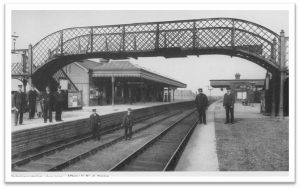
To finish my story, I have recently taken the bus to the top of Pecks Hill as far as Stewart Street and onto Francis Street where I was born in 1910, there was only Hatchers Farm where the garage is now and a few houses, I did find the rock face where my friend and myself carved our initials all those years ago.
My story has brought back many memories, some good and some not so good, but that’s life. I trust it’s not so boring but it is my own writing and thinking.
As the 20th century developed, visitors continued to arrive, not necessarily by train but in coaches or their own transport. The beauty of the forest remained a magnet, although the ducal houses and their estates were not the same. Clumber house, home of the Dukes of Newcastle, was demolished in 1938; Welbeck Abbey, home to the Dukes of Portland, (the state rooms being opened to the public for a short time each year); Thoresby Hall, once the home of the Pierrepont family, became an hotel; and Rufford Abbey, owned by the Saville family, fell into ruinous state after the second world war, and was partly demolished. Now this forms part of Rufford Abbey Country Park. R. Beresford
In the 1950s, tourism increased as the forest started to open up to visitors. A link here to a film from MACE. – Know Your Midlands: 26.08.1957: Sherwood and the Dukeries https://www.macearchive.org/films/know-your-midlands-26081957-sherwood-and-dukeries?fbclid=IwAR1GdYtdFbCzTAX3D3kHe7j0OWof84ItW-QEojIOhJprOMS6ctmiiCyW-ew
Sherwood Forest Visitor Centre
In 1976, a Visitor Centre was opened in the forest. This was well patronised, with life-sized tableaux of the Robin Hood story and interpretation of forest history and wildlife, an Activities Centre, Ranger Base, gift and craft shops, an information office and restaurant.

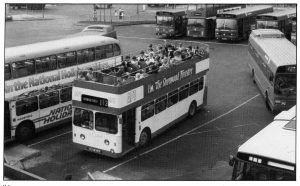
“All aboard for Robin Hood & Maid Marian. Sherwood Forest and Edwinstowe, here we come”.
After so many years the buildings were beginning to look tired, and ready for a re-vamp, and as they were on a site of Special Scientific Interest, the decision was taken to demolish the Centre and erect a new Visitor Centre, which opened in 2018, on a site near to the cricket ground. This is managed by the RSPB and partners on behalf of the Nottinghamshire County Council.
Plans for a new Visitor Centre – 2007
In 2007 the public was for the first time asked to vote on which environmental project should get £50m of lottery cash. The Sherwood Forest Living Legend was one of the six schemes to go through to the final.
Sherwood Forest: The Living Legend.
‘The Tree,’ ‘modern and exciting, and wholly appropriate for its forest setting’, or ‘a visually intrusive eyesore inappropriate in the open countryside’?  It will now be left to members of the public, in a TV vote, to decide if ‘The Living Legend’ will come to fruition. At a meeting held at Edwinstowe House on August 21, members of the Notts County Council Planning Committee granted conditional consent to the new replacement visitor campus for Sherwood Forest. The application includes accommodation for interpretation, catering, retail, education & exhibition space, external visitor facilities, parking, four wind turbines, a new footbridge across Swinecote Road, elevated walkways, new multi-user paths and landscaping.
It will now be left to members of the public, in a TV vote, to decide if ‘The Living Legend’ will come to fruition. At a meeting held at Edwinstowe House on August 21, members of the Notts County Council Planning Committee granted conditional consent to the new replacement visitor campus for Sherwood Forest. The application includes accommodation for interpretation, catering, retail, education & exhibition space, external visitor facilities, parking, four wind turbines, a new footbridge across Swinecote Road, elevated walkways, new multi-user paths and landscaping.
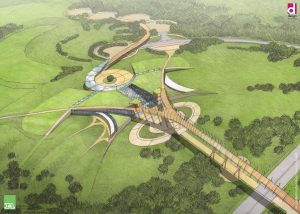
The application did not include the proposed closure of Swincote Road. Notts County Council has decided that the closure of Swinecote Road should not be pursued at this time. It has agreed that it would be more appropriate, given the comments of Highways staff and the objections of local residents and others, to keep the road open and monitor traffic levels in Edwinstowe. If those levels prove to be detrimental then a road closure could be sought in the future.
The conference room was full to capacity. Four members of the public were invited to speak. They were Councillor Pam Bird, representing the Parish Council, Gwen Barber, Joe Bennett and Barbara Starbrook. Each was given three minutes to address the Committee.
It was obvious, from the reaction of the residents who attended the meeting, that they were not impressed by the computer simulated fly-by of ‘The Tree”.
Councillor Bird sought assurances that Swinecote Road would not be closed in the future and was concerned about the impact that the increased level of traffic would have on local residents, as well as the impact that the increased visitor number could have on the forest.
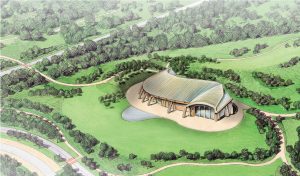
Local residents had campaigned against closing the road and had presented a petition of 1300 signatures objecting to the closure.
Gwen Barber referred to the Planning Report that said ‘The Tree being only the first stage of a much larger project, ‘how large?’ And, in a recent letter to the ‘Chad,’ it was said that 700 jobs would benefit the local economy, but the report talks of only 25 permanent jobs and 11 casual positions.
Joe Bennett questioned using the proposed site and suggested a site off of the Budby Road would be more appropriate. Barbara Starbrook said, “Robin Hood would turn in his grave and would not like what you are doing to his home”
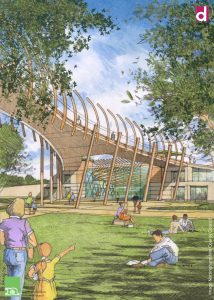

Many local residents had sent letters to Notts County Council. Their objections related to: –
the cycle path via the allotments and Royal Oak Court; ii) the proposed cycle route to the north of the cricket pitch; iii) the visual impact and possible noise intrusion from the wind turbines; iv ) ‘The Tree’ will be a visually intrusive eyesore and its design is inappropriate in the open countryside; v)Increased traffic; vi) the capacity of both the single access point to the development and, the car parks; vii ) the proposal is contrary to Local Plan policy; viii) the project is unnecessary and will be a waste of money; ix) the forest should be left as it is at present and existing bridleways should not be downgraded.
Sustrans, the National Cycle Network was chosen by the public to receive the £50m.
The winning proposal was from the RSPB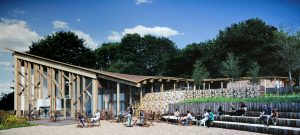
The original Visitor Centre was licensed to perform wedding ceremonies, with several couples tying the knot in a greenwood setting. It now remains for something of a suitable nature to be in place as a reminder that this was a special place for those people who plighted their troth for one another.
In 1984, the first of the annual Robin Hood Festivals took place, attracting approximately 40,000 visitors during the week. These events still take place, (unless unforeseen circumstances prevail) and last for a week. Various events are staged which include live entertainment, strolling jesters and jugglers and jousting competitions.
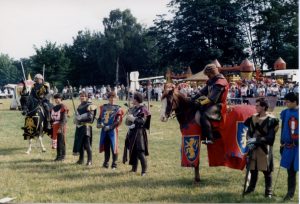
July 1985
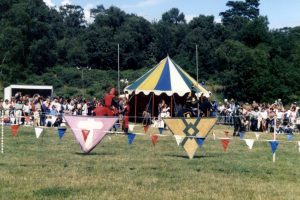
July 1985
Pageants were held in the village in 1927, 1935 and 1953, with the 2000 Millennium Pageant drawing vast crowds.
Winter attractions include Spooky Halloween Trails, and Sparkling Sherwood evenings held in December, when visitors can see Sherwood’s ancient oak trees in a whole new light.
One of the Summer attractions is the Major Oak Woodland Festival, when craftspeople from toy makers to willow weavers hold demonstrations.
As most parents are all too well aware a visit to the forest is not complete for their offspring without a visit to the fair which is located in Naish’s field, during the summer months, having previously occupied several sites around the village. The right to hold a fair was confirmed in 1402, with a two-day fair held towards the end of October. Held in the churchyard it would consist of a small cluster of stalls and booths. In more recent times a fair would visit the village on an annual basis.
The idyllic setting of the cricket ground has always attracted spectators especially on Sundays, for it would be difficult to find a more pleasing setting to enjoy one of England’s favourite sports. In the past, well known cricketers have graced the wicket especially for benefit matches for colleagues of local county teams.
Acknowledgements
- J. Jackson “The Story of a Forest Village”
Margaret Woodhead “Edwinstowe 1890-1900s”
The Acorn
Edwinstowe Tourism Booklet Printed in 1900
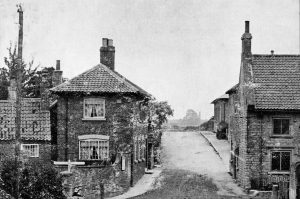
Illustrated Guide to Worksop. The Dukeries and Sherwood Forest.
Edwinstowe comprises of two mansions, two hotels, a beer house, a number of neatly kept cottages with a few small shops and some farms, all of which cluster around the venerable church. Rustic and pleasant as it is…. And clean and quiet withal – though restful would perhaps be the better word. In front of the cottages are dainty gardens, redolent of sweet – scented flowers and having trees. From their inhabitants may be purchased, in the season, currants, raspberries, apricots, and other luscious fruit. The only object of interest in the village is the Parish Church, which is dedicated to St. Mary.

Sissons and Sons Worksop 1927
A pretty Saxon village, Edwinstowe – is really a half way stage of the circuit around ‘the Dukeries’ starting from Worksop, and as may be expected there is abundant convenience for the supply of refreshments. What is more, there is excellent private boarding house and hotel accommodation where the resources for entertaining visitors are such as are not often to be met with in rural districts.
 No more delightful country spot could be chosen than Edwinstowe in which to make a stay of two or three days: whilst those seeking quiet repose and health promoting change, may spend a more lengthy period to great advantage in this picturesque woodland scenery surrounding them. Horses and carriages are kept for hire, and visitors making Edwinstowe their headquarters will assuredly meet with every comfort and convenience.
No more delightful country spot could be chosen than Edwinstowe in which to make a stay of two or three days: whilst those seeking quiet repose and health promoting change, may spend a more lengthy period to great advantage in this picturesque woodland scenery surrounding them. Horses and carriages are kept for hire, and visitors making Edwinstowe their headquarters will assuredly meet with every comfort and convenience.
 Postcard Jubilee outside the Dukeries Hotel
Postcard Jubilee outside the Dukeries Hotel
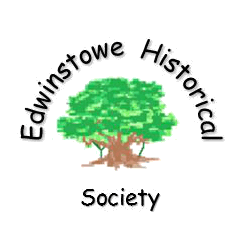 Edwinstowe Historical Society
Edwinstowe Historical Society